On our fourth day driving in the USA, we woke up cold in our car at the mighty Grand Canyon. The night before in Vegas we woke up dripping in sweat. It’s remarkable how the weather changes so drastically from place to place in the same country.
As I wrote in my previous post, we got up early to watch the sunrise over Grand Canyon, and then headed back to Williams and onwards to Flagstaff via Route 66. Flagstaff is small city with 140,000 inhabitants. It’s the biggest city on the Route 66 stretch in Arizona. We didn’t stop for long in Flagstaff, but decided to continue driving to some nature spots that we would rather explore.
Close to Flagstaff is a Route 66 landmark, the Twin Arrows, a pair of giant red and yellow arrows that point towards a long-abandoned café and trading post, which was made famous by the movie Forrest Gump!
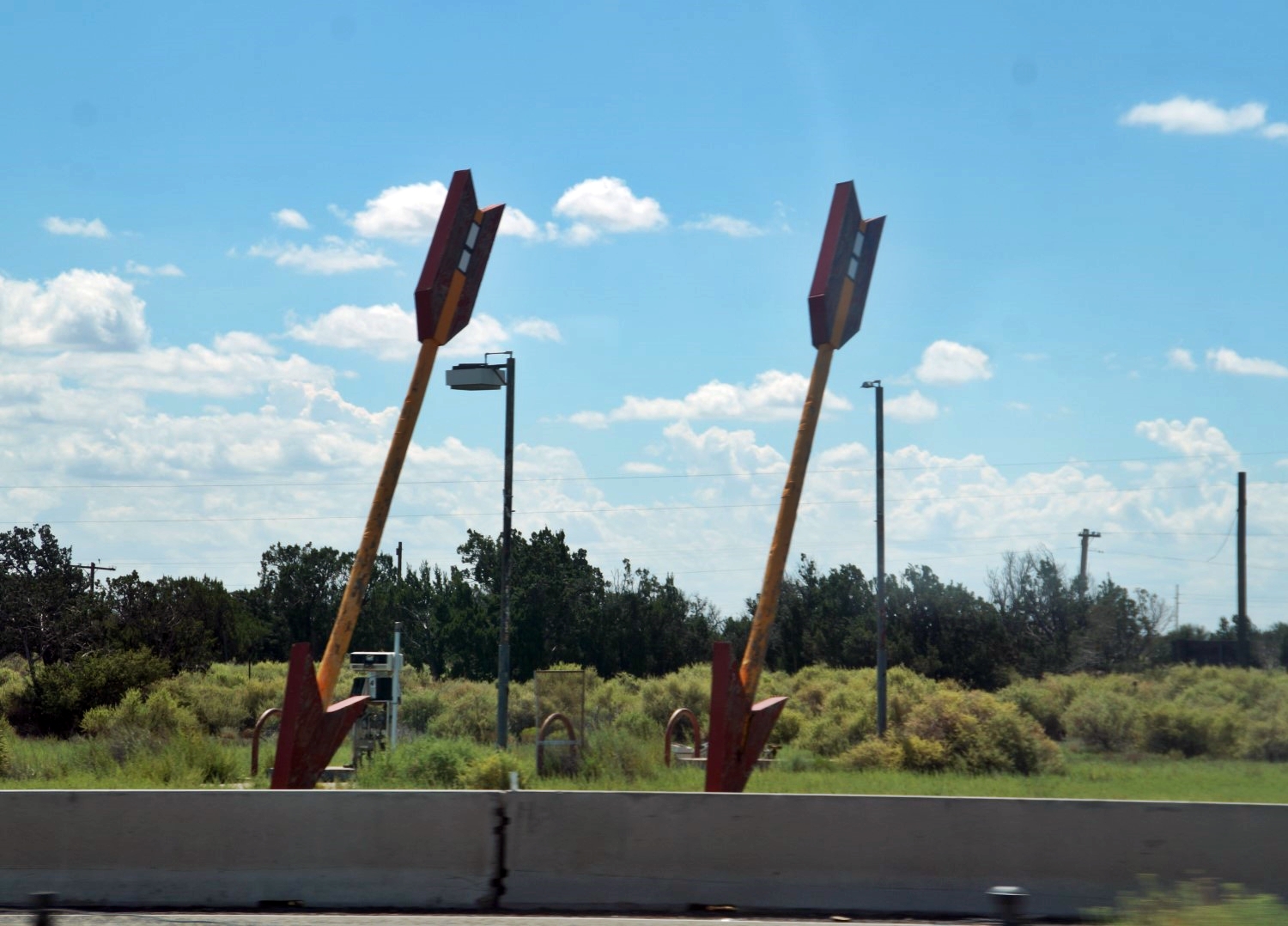
Next up was the Meteor Crater, also known as Barringer Crater, after the guy who first suggested that this ginormous circular depression was created by meteorite impact. I had read about the place online and since it was only a short detour from Route 66, I figured it would be a shame to miss it! The Barringer family owns the crater and proclaims that it’s the world’s best preserved meteorite crater.
The crater was created over 50,000 years ago when a small meteorite hit the surface of the earth with such speed that it left an impact right on the spot forever. Since the Meteor Crater is relatively young and paired with the climate of Arizona, this crater has remained almost unchanged since its formation, apart from some erosion. Due to this, Meteor Crater was the first crater in the world to be recognized as an official impact crater.
In connection to the crater lookouts, there’s a museum which offers great information about the place and meteorite craters in general. We also watched a short film about the craters formation and discovery. The price to get in is steep at 18 USD each, but it was definitely worth it.
It was a really impressive sight, and it makes you realize the impact that a meteorite can have on life on Earth. I just hope scientists will be able to keep them away from us in the future 😉
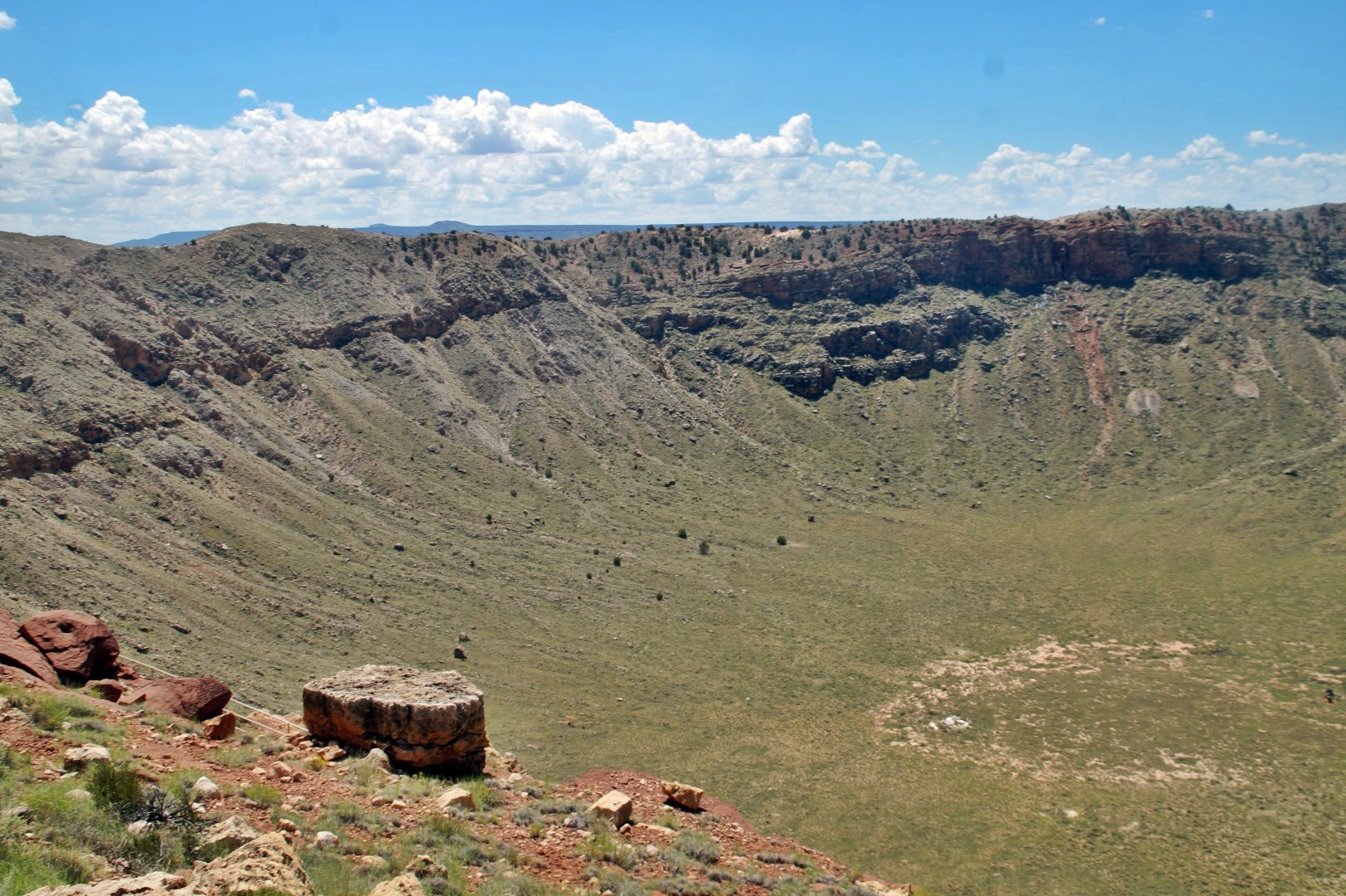
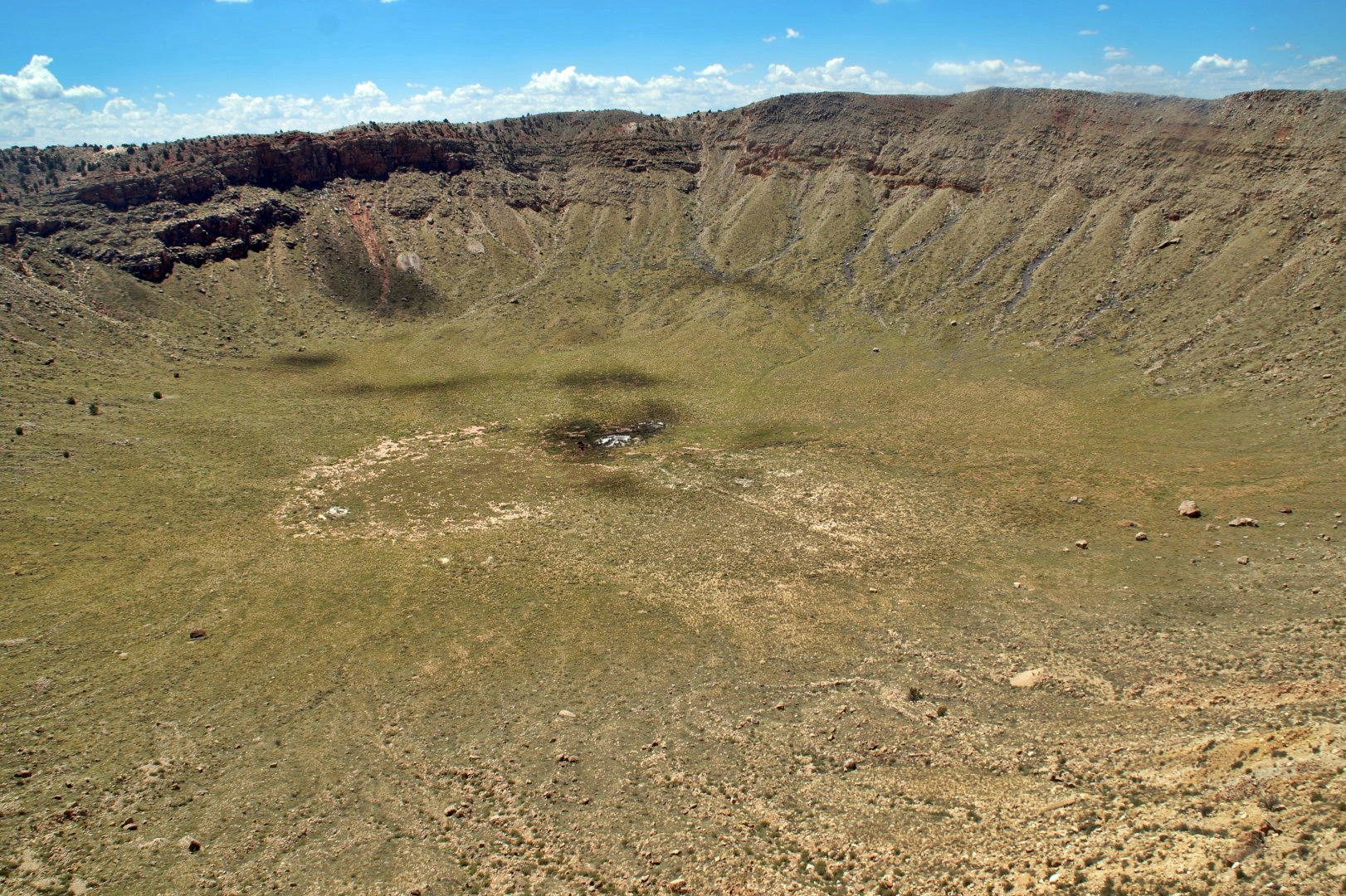
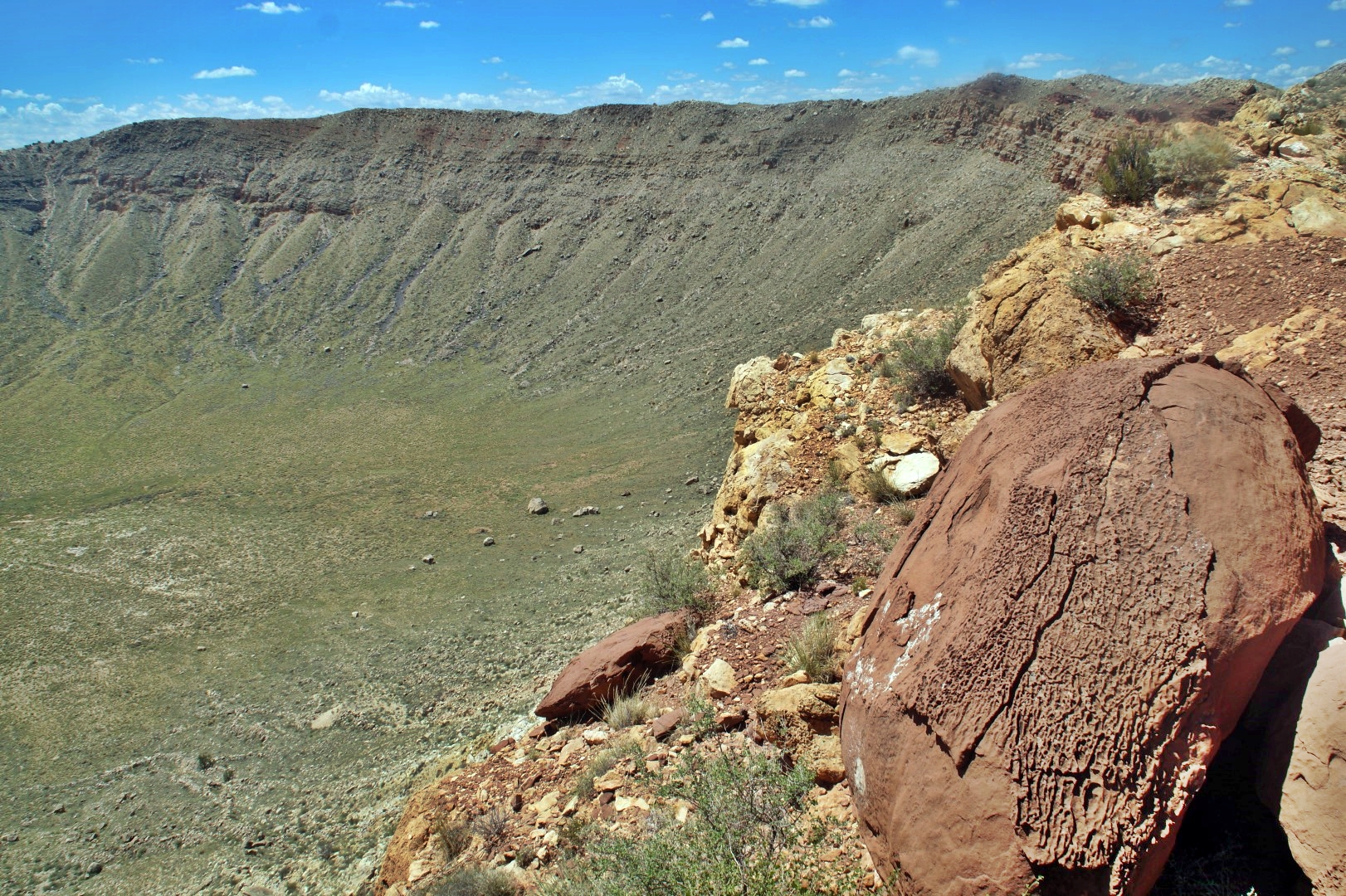
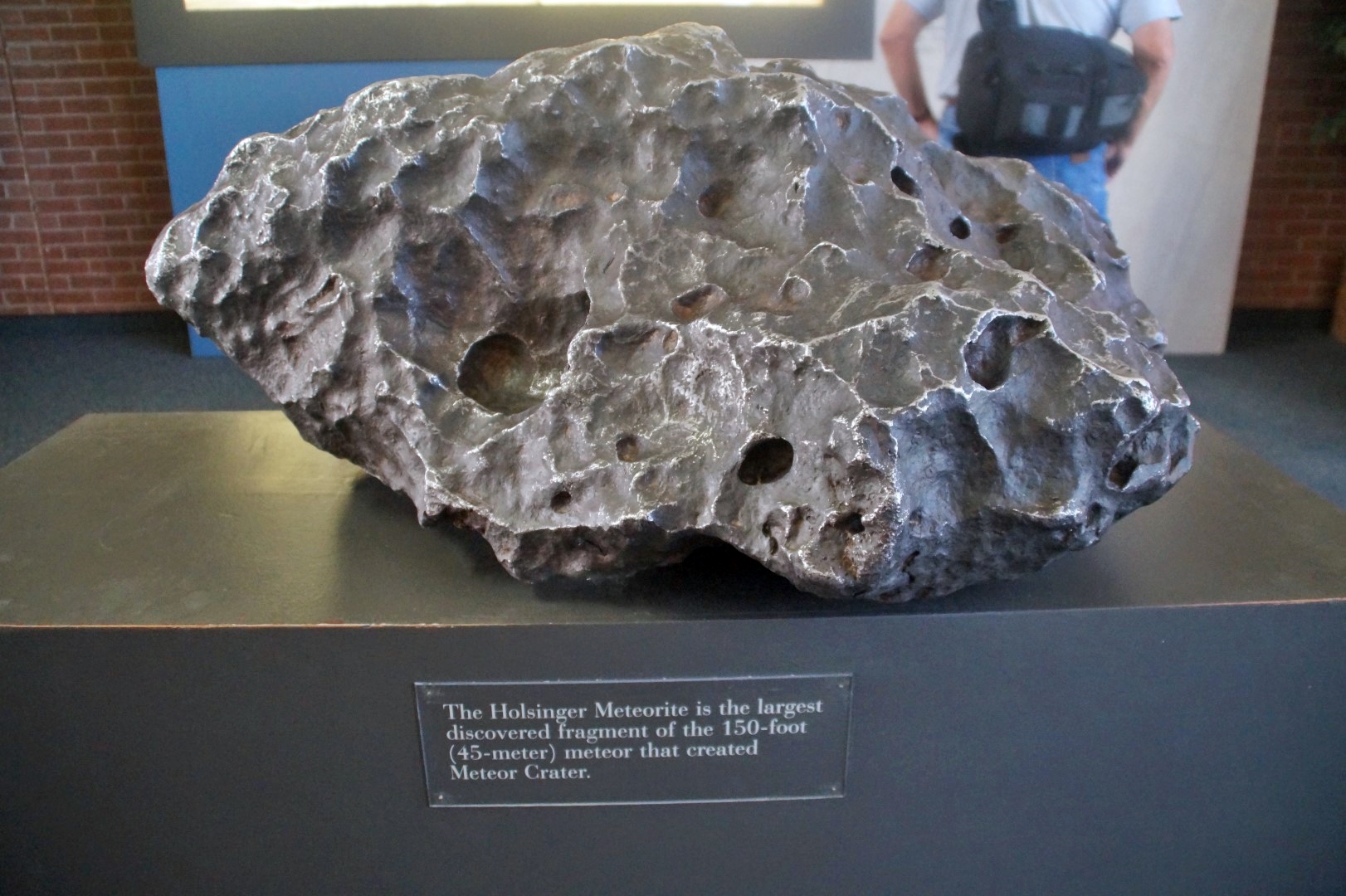
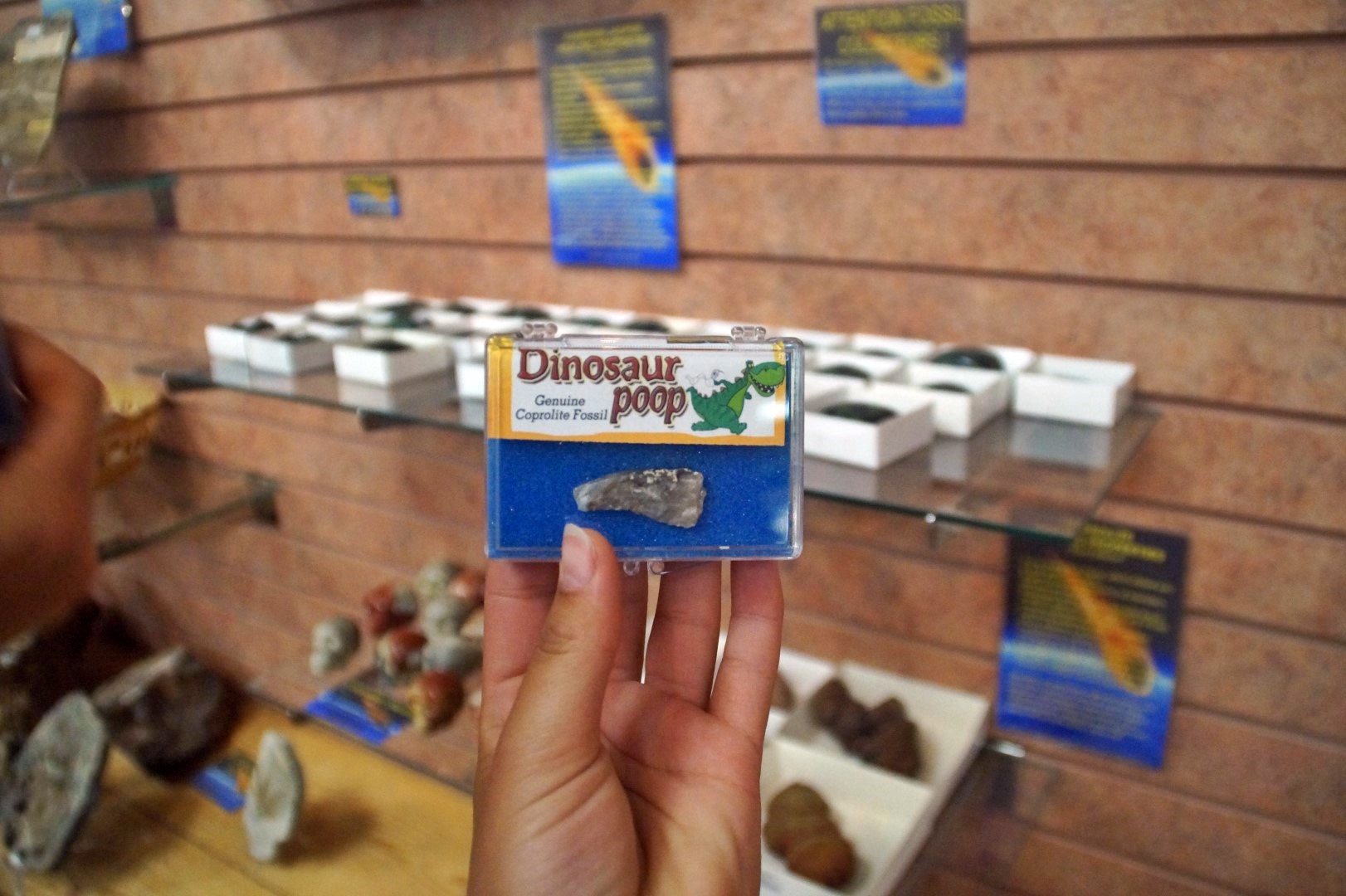
Fancy some dinosaur poop?
Back on Route 66, we drove to Wigwam Motel in Holbrook. This is an authentic motel from the 1930s, where you can sleep in so-called wigwams or tipis. The owner of the motel and associated shop and small museum was really nice, and told us all about the nearby Petrified Forest National Park, which we then decided to go to!
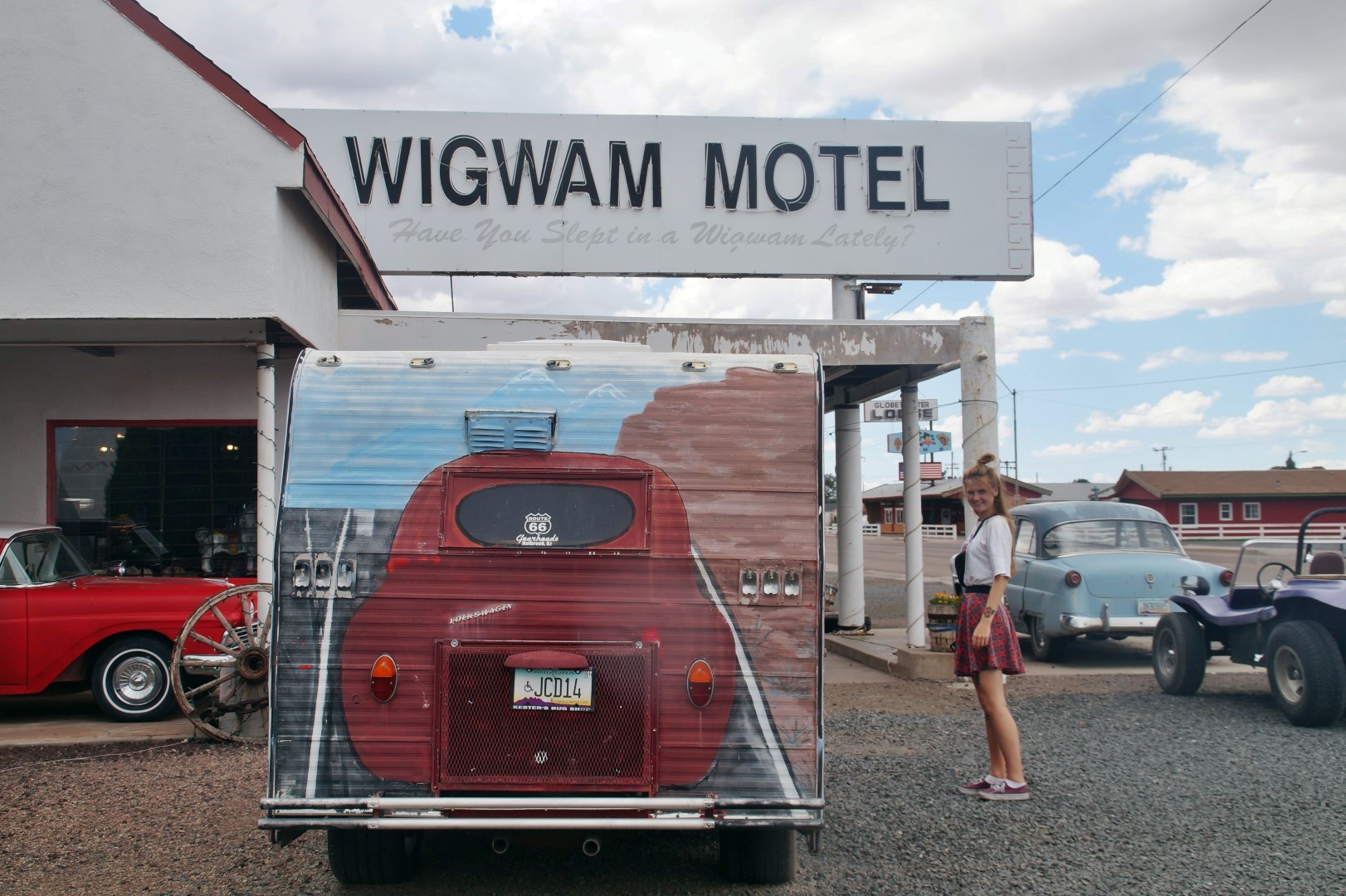
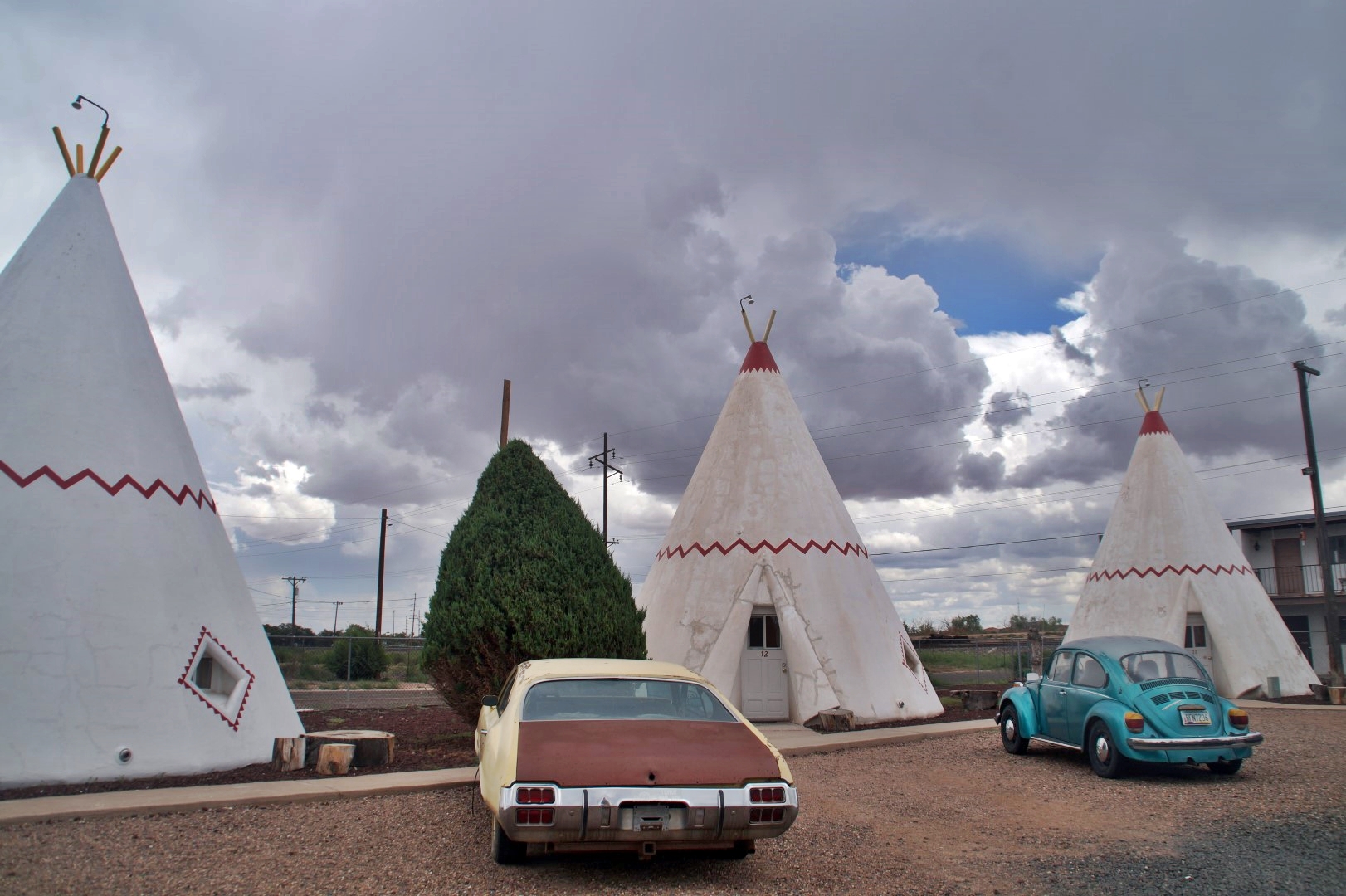
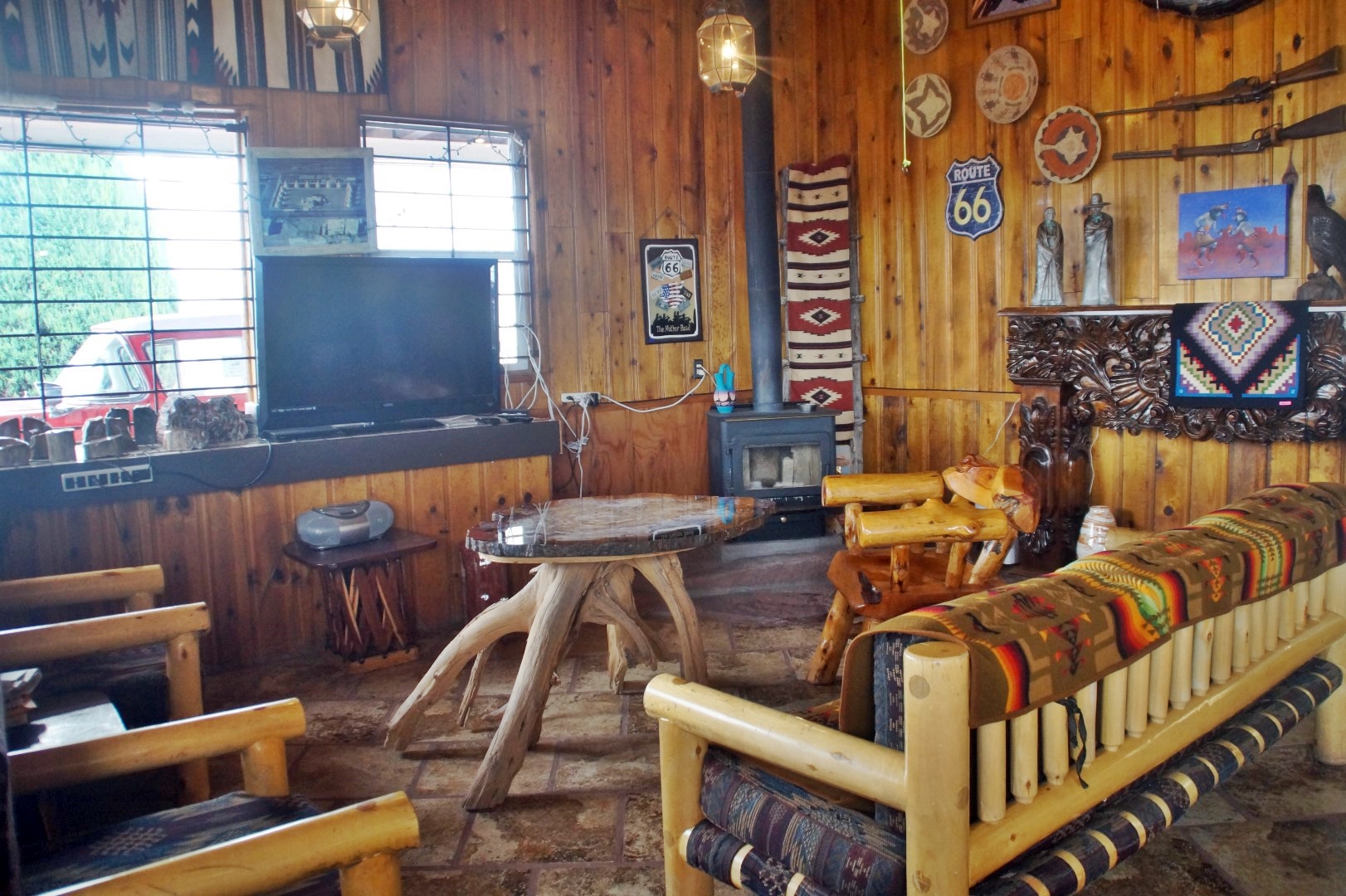
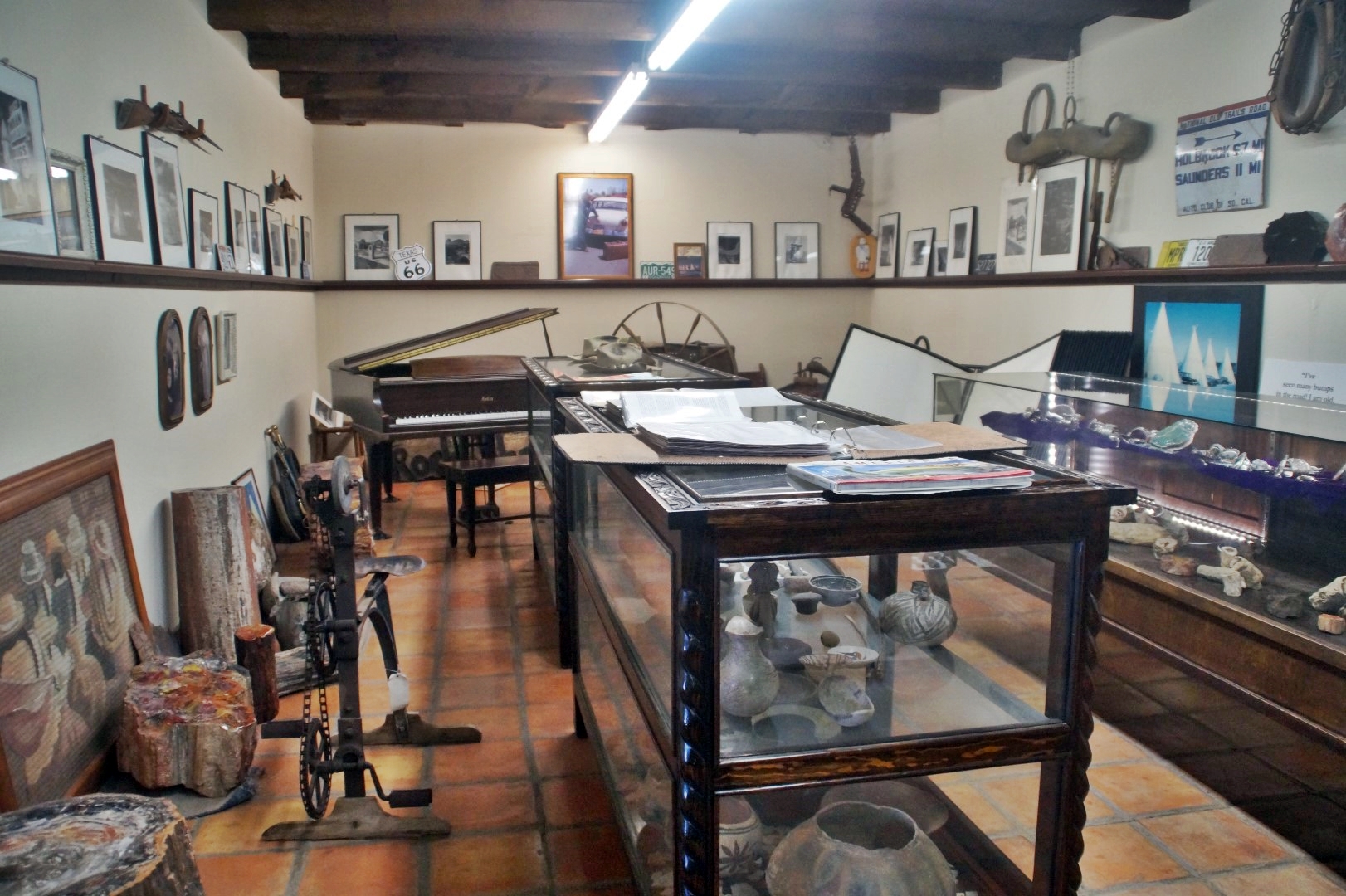
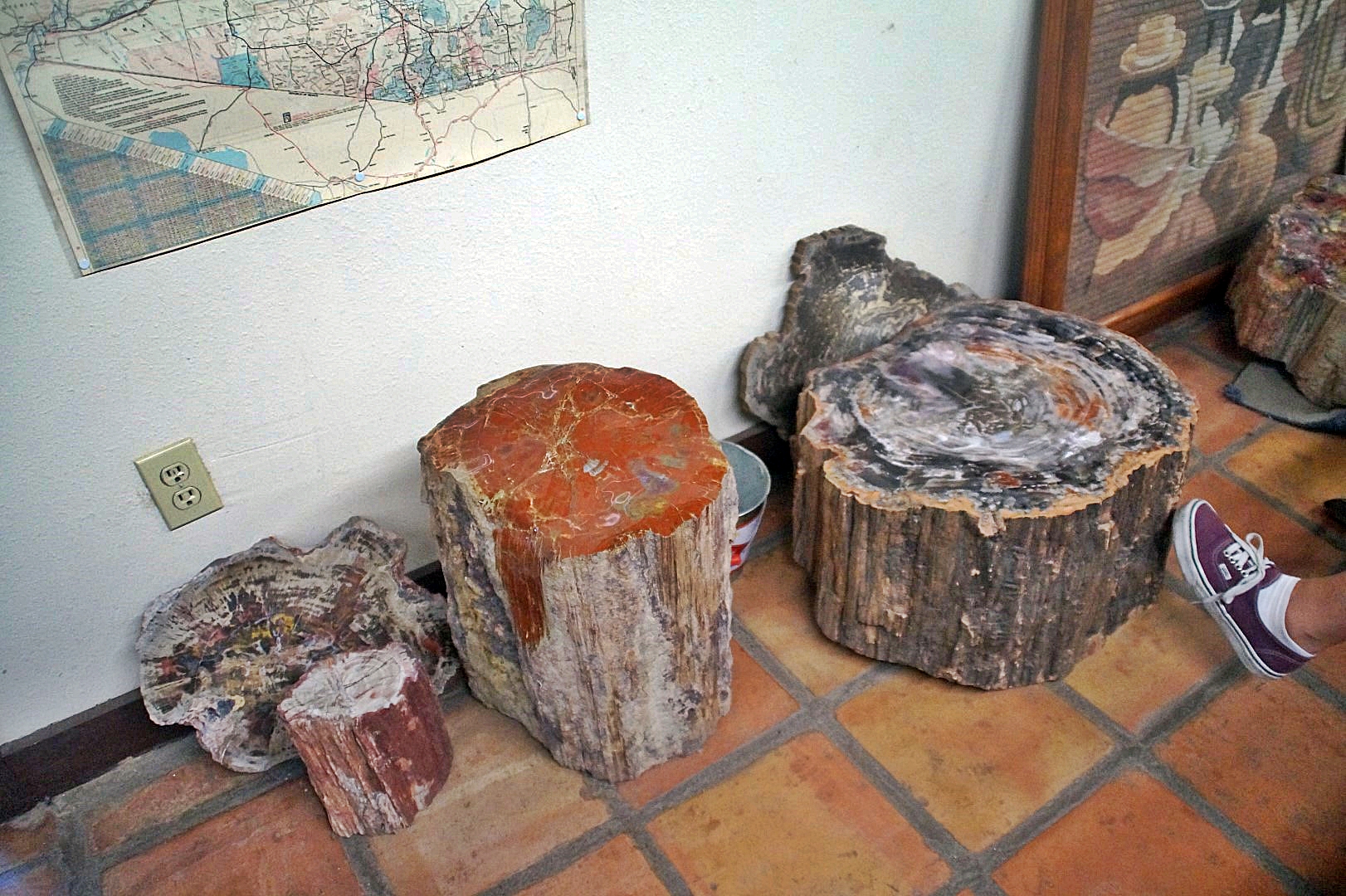
Petrified wood – this inspired us to go to the national park!
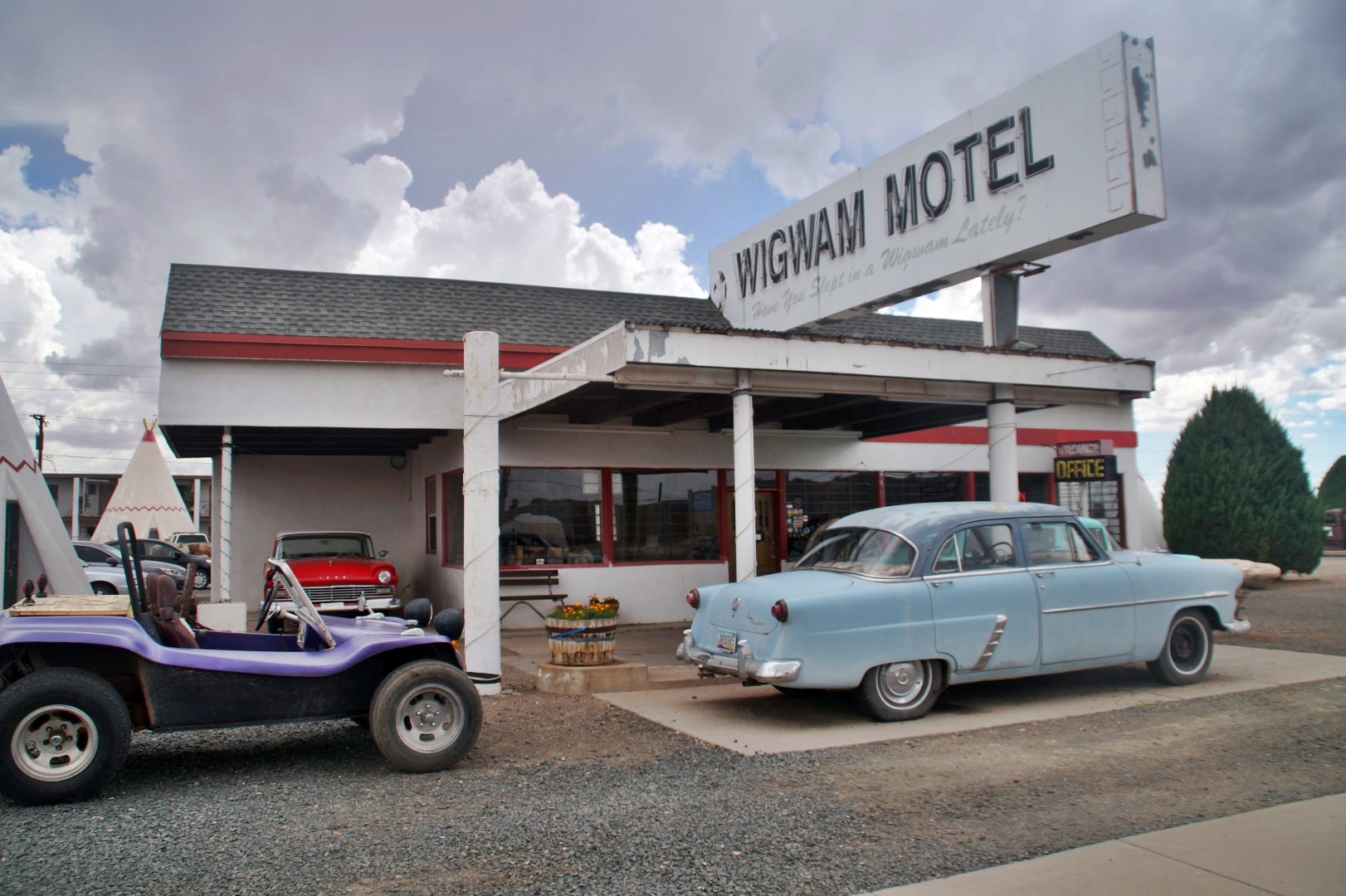
The national park lies only 19 miles from the motel as a 45 miles detour loop from Route 66. This is another one of Arizona’s beautiful national parks (I swear this state is the best!), which is famous for its large deposits of petrified wood as well as the colourful Painted Desert.
The weather was horrible with lightning striking nearby, so driving through the national park was our only safe option. I would’ve loved to have done some hikes too though! That will be next time! We saw parts of the Rainbow Forest near the visitor center, stopped at Newspaper Rock to admire ancient petroglyphs, and again at Nizhoni Point in the Painted Desert to admire the amazing views of the multi-coloured desert.
Getting into the park cost us 20 USD, which was money well spent considering how much there is to see and do there!
The first part of the national park consists of vast petrified forest, the so-called Rainbow Forest, which is a forest full of fossilized trees. Petrified wood is the result af a tree that has completely transitioned to stone by the process of permineralization. All organic materials have been replaced with minerals, but the tree has retained its original structure, leaving it as a three-dimensional fossilized representation of the original tree. These trees are as old as 225 million years. Most of the wood is from Arucarioxylon arizonicum trees, and at least nine species have been identified, all of which are extinct!
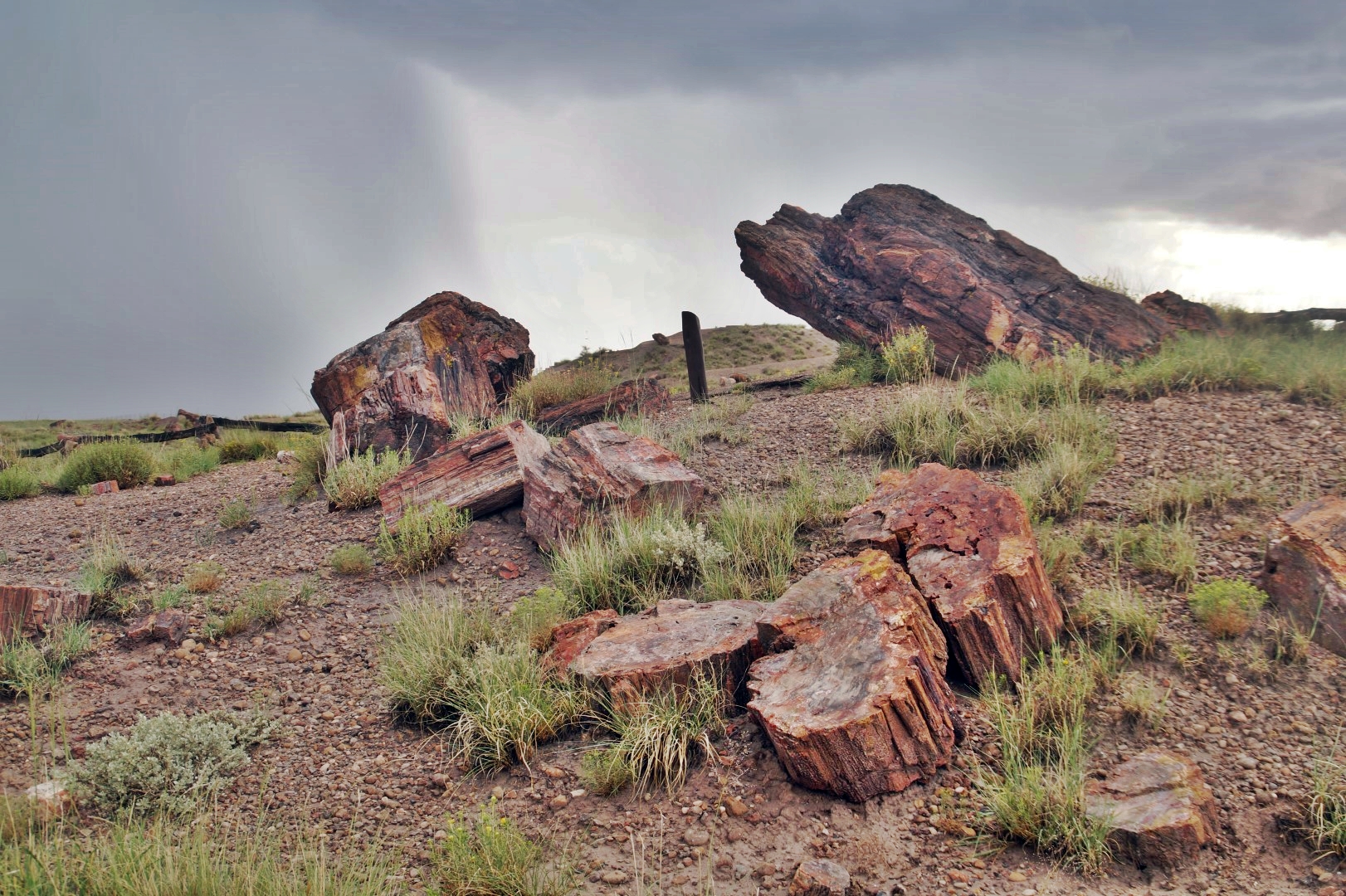
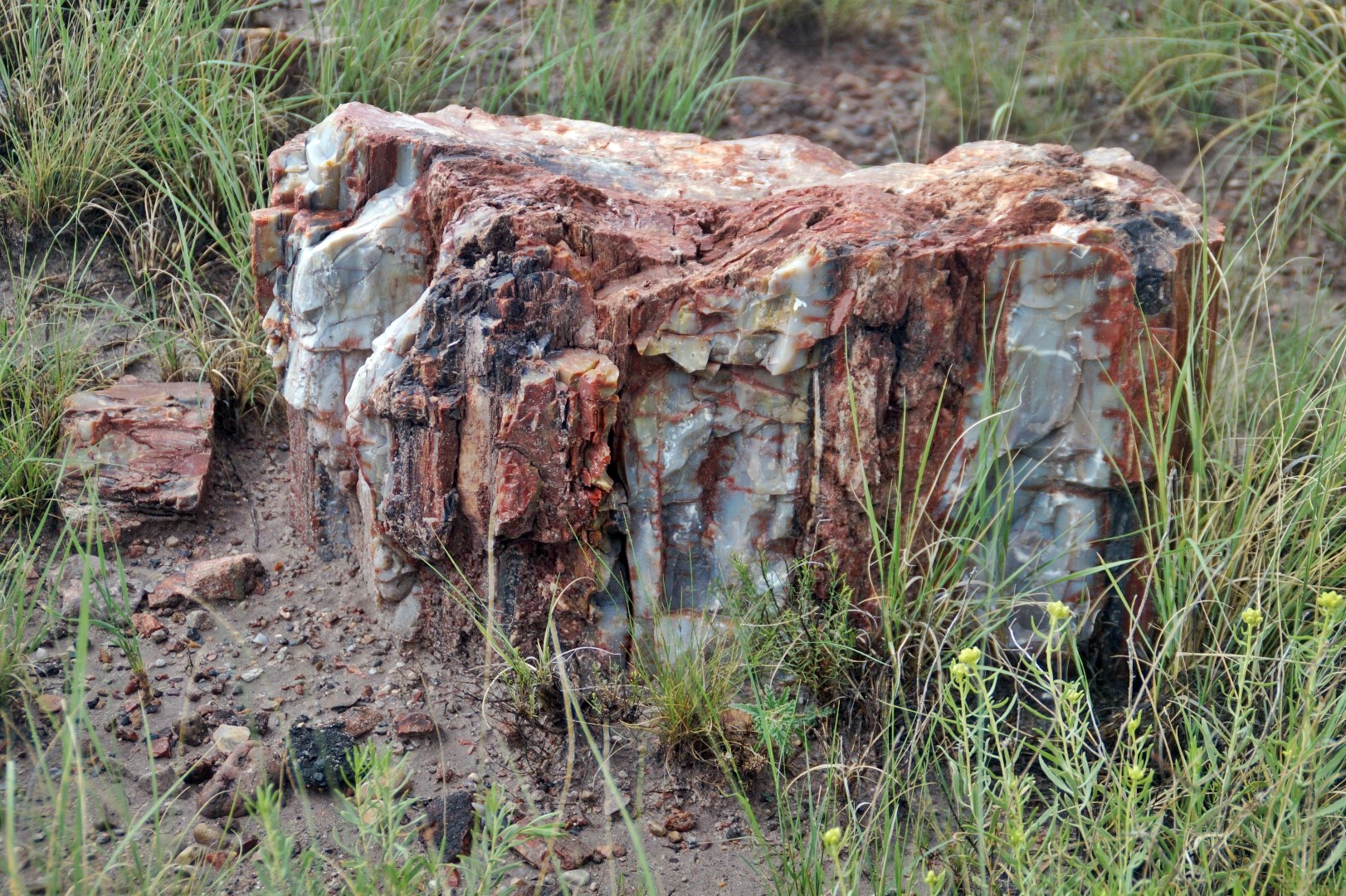
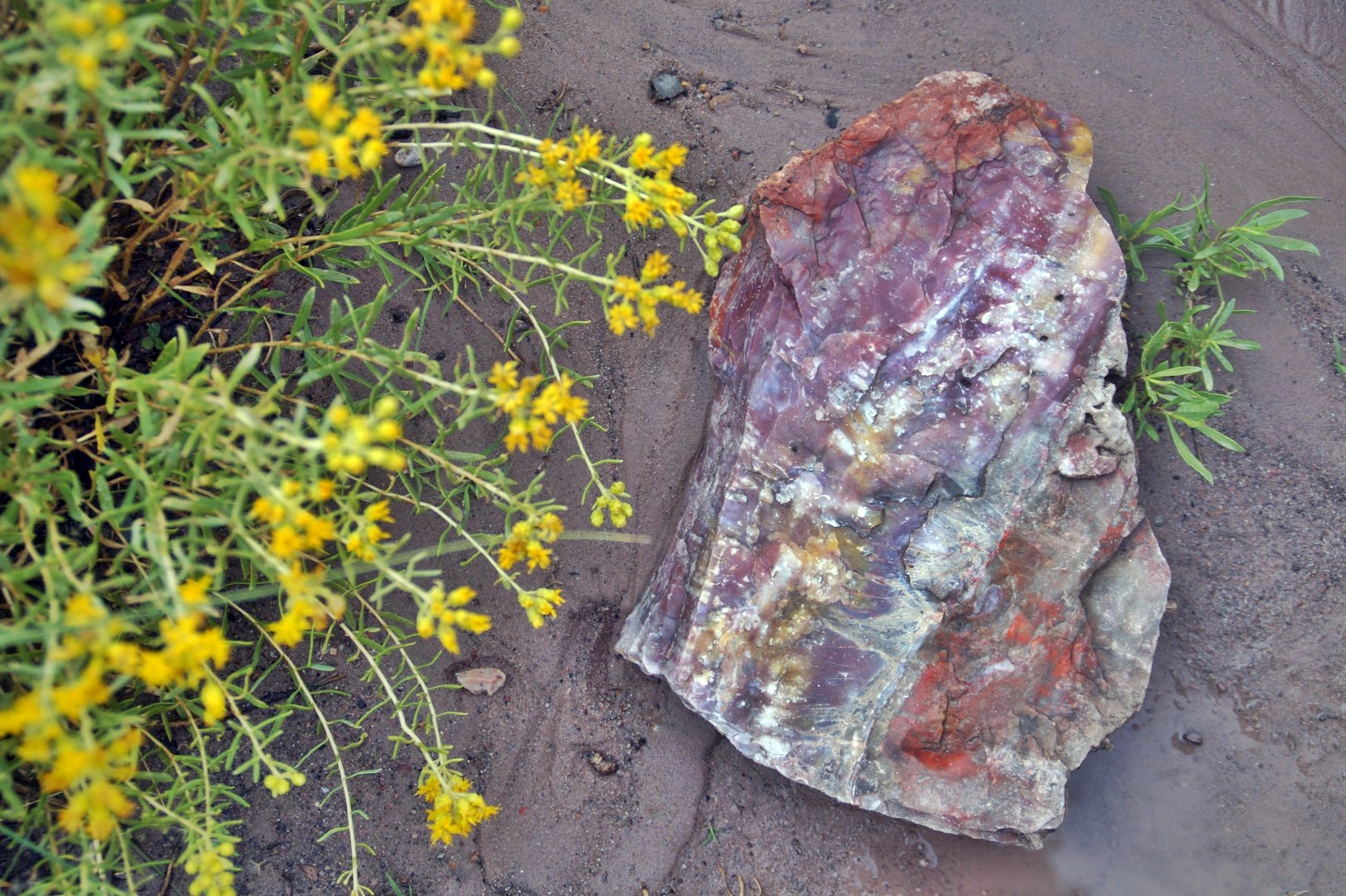
Driving through the national park was a true pleasure. We entered the Painted Desert and saw all kinds of colour displays on the mountains, from yellows to reds and oranges. The stratigraphy of these mountains was mesmerizing.
The Painted Desert gets its name from the colourful Chinle, which consist of a variety of sedimentary rocks. The formation of the Chinle began 60 million years ago, when the Colorado Plateau was pushed upward by tectonic plates and exposed to much erosion.
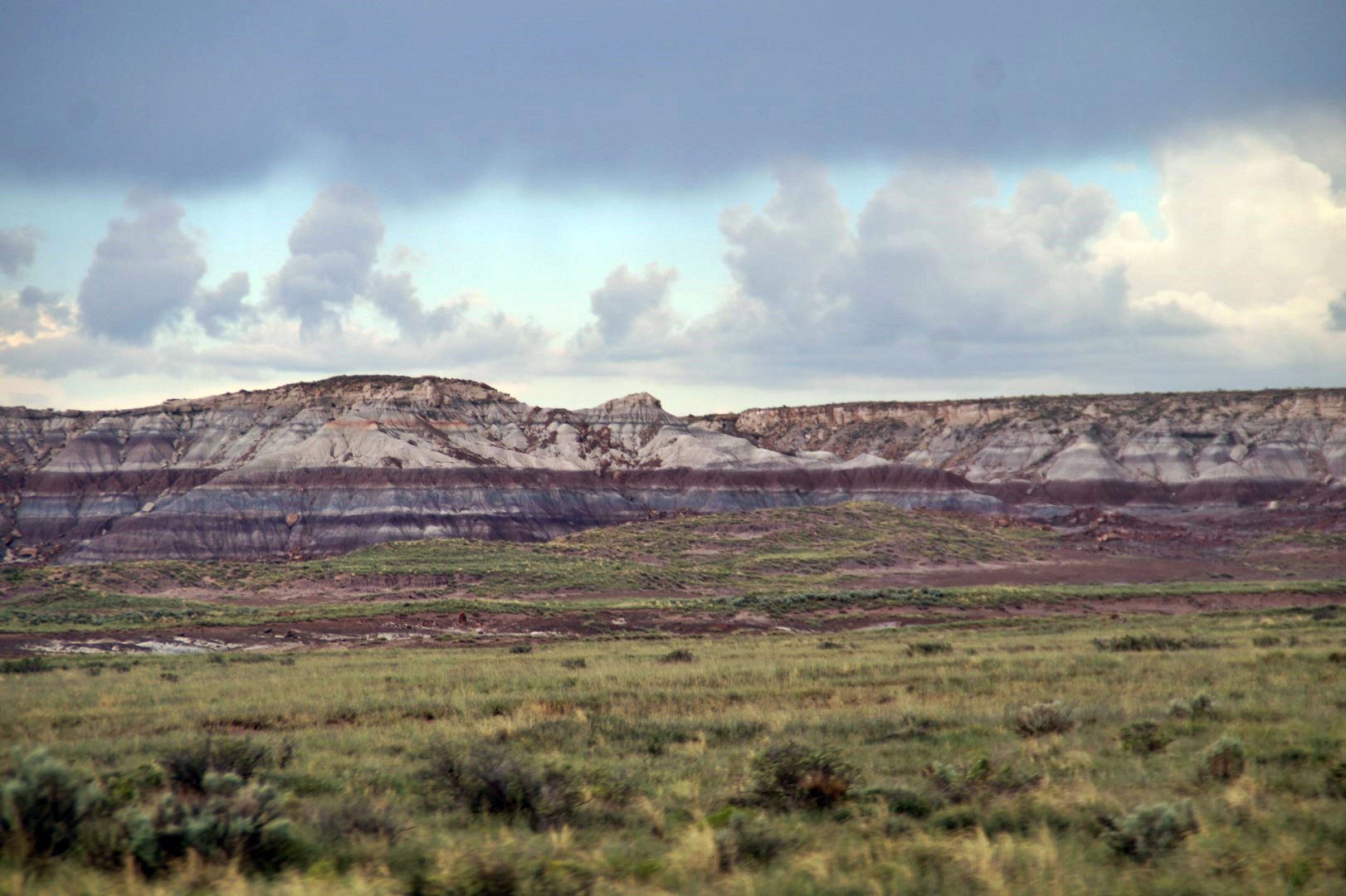
The colourful Chinle
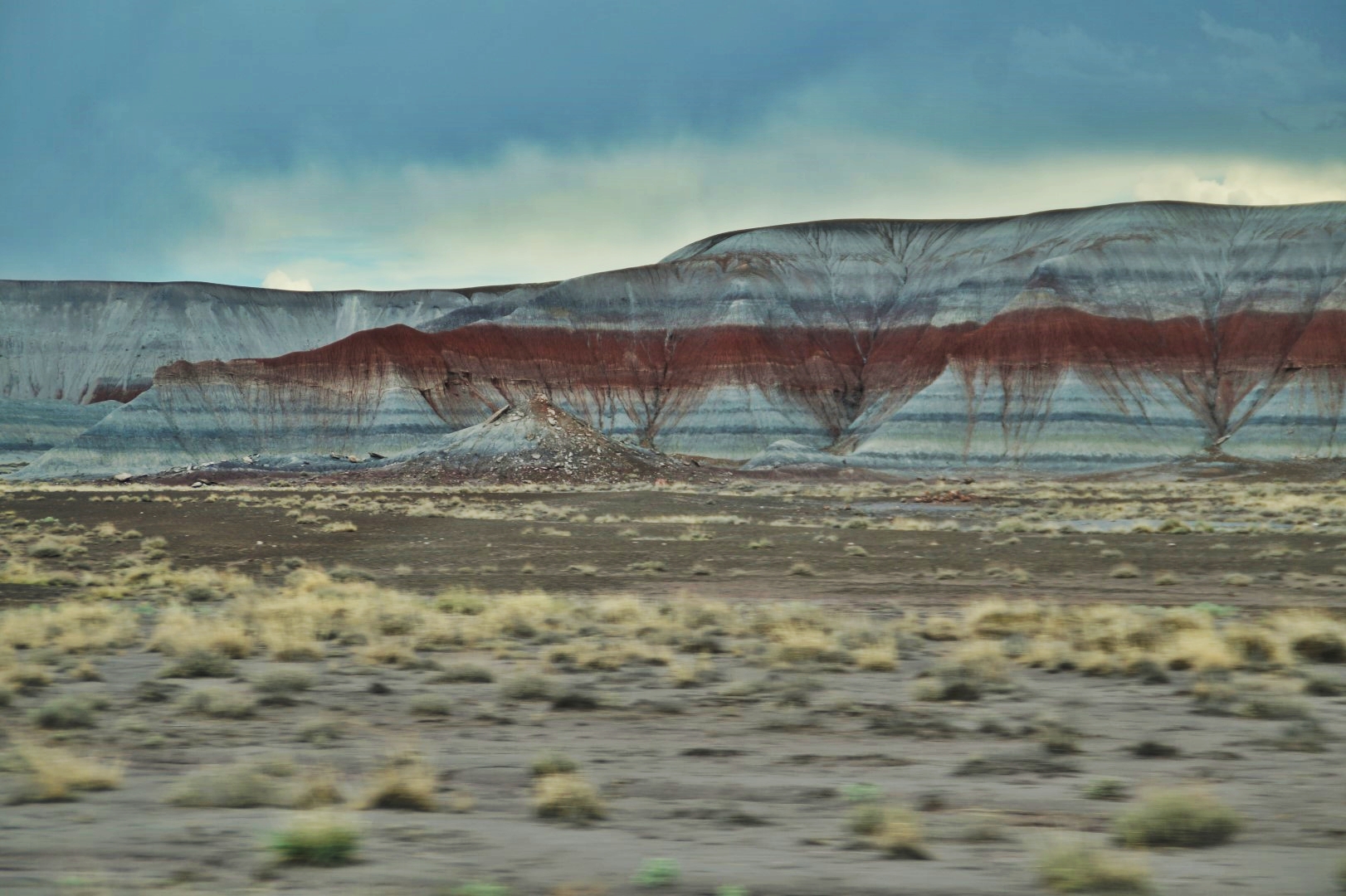
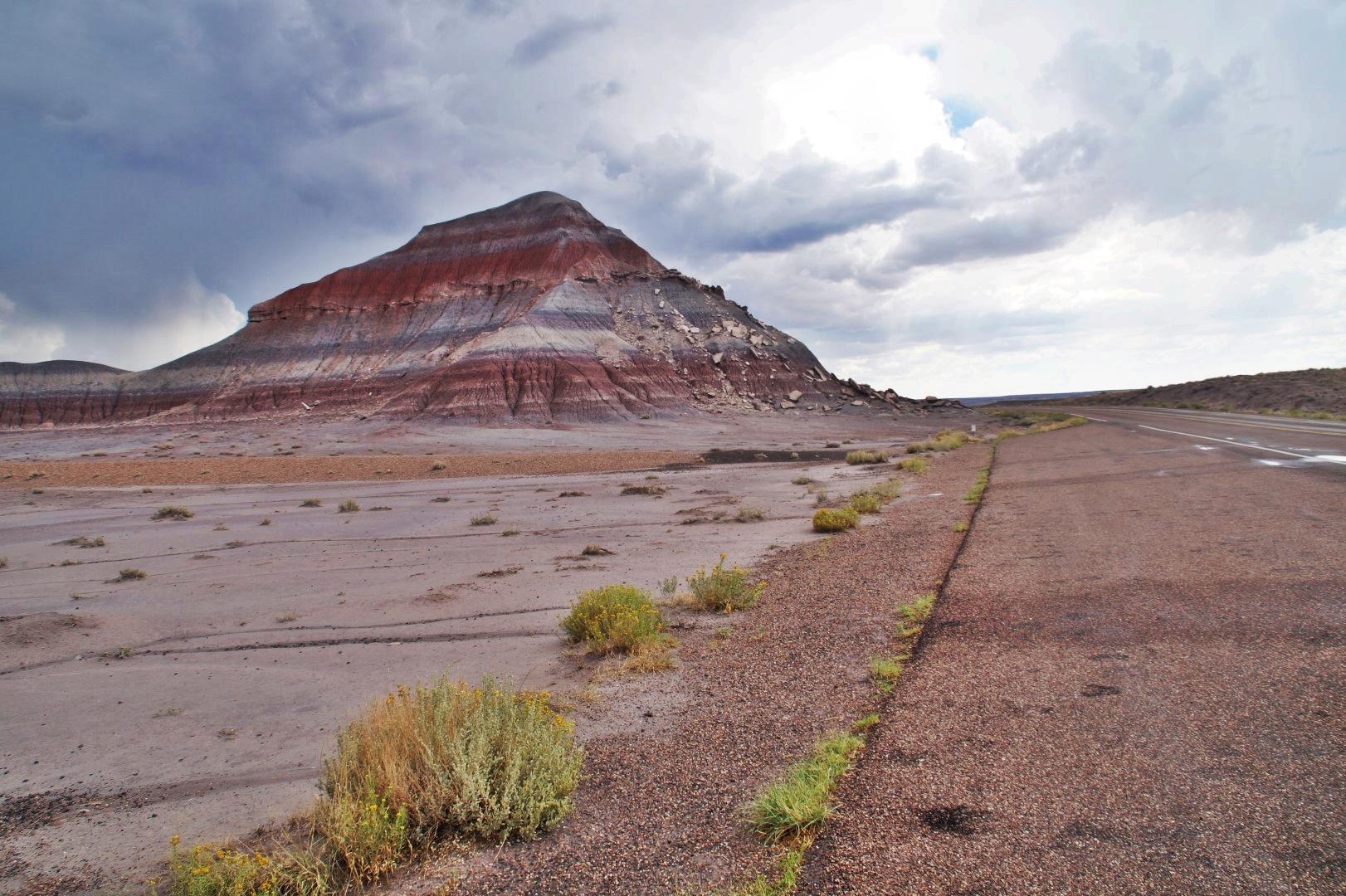
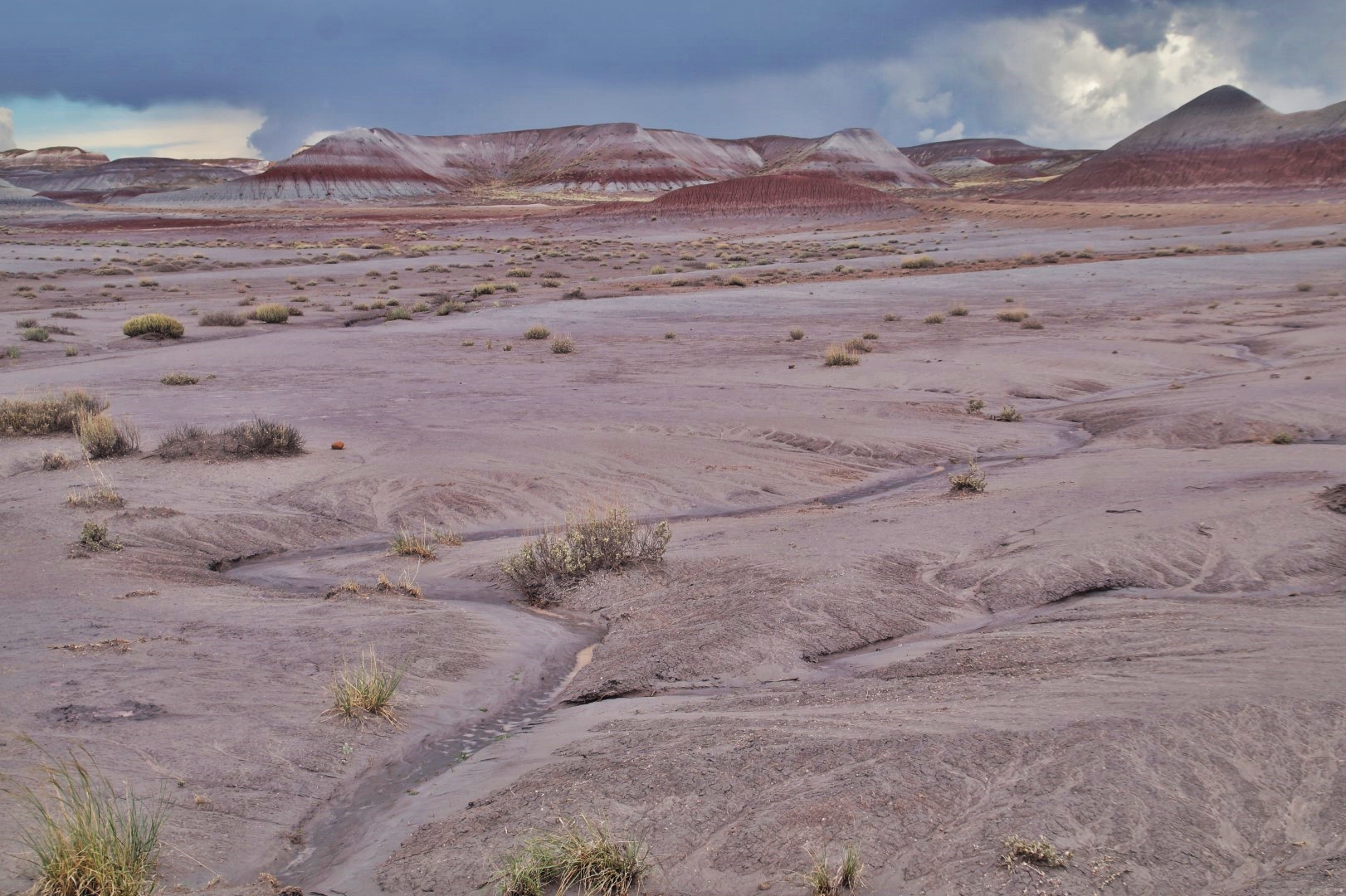
As well as its many geological wonders, the park is also home to some of the earliest traces of prehistoric man in the country, who arrived in the park at least 8,000 years ago.
We made a stop at Newspaper Rock, a very interesting archaeological site, where petroglyphs have been carved onto rock surfaces. They are believed to be 2,000 years old.
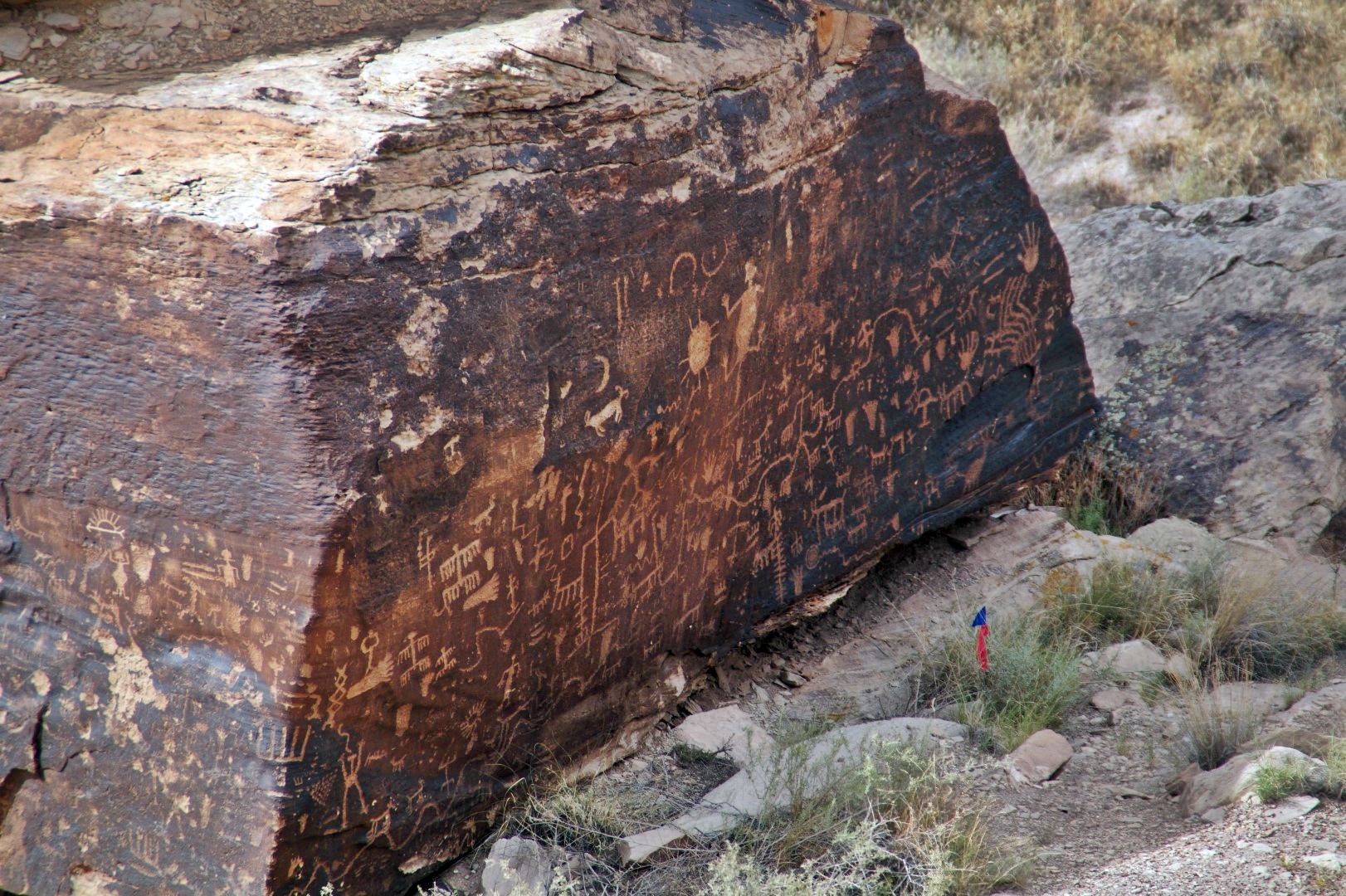
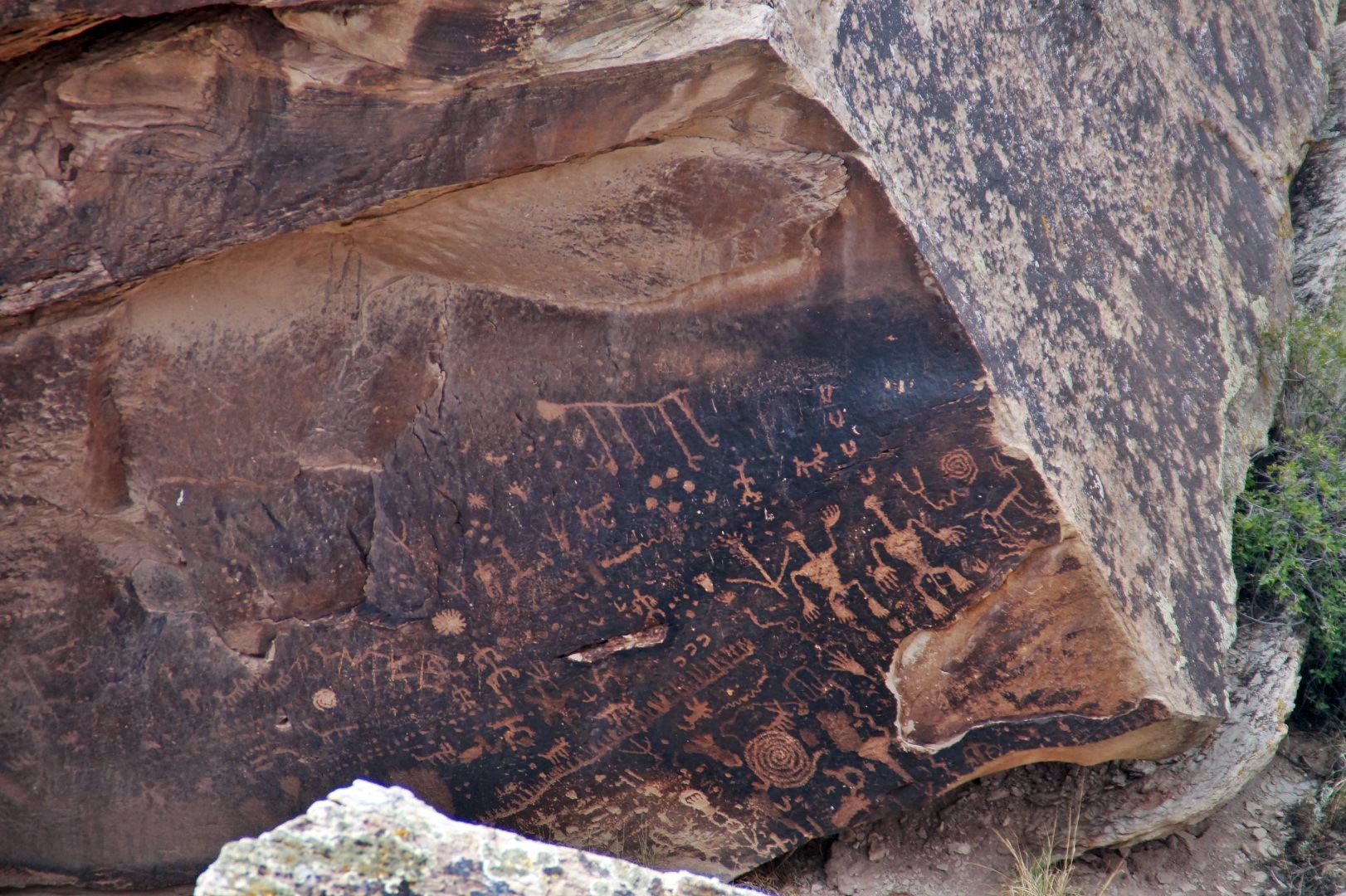
The next and last section of the national park was, in my opinion, the most beautiful. We entered another part of the Painted Desert, where the mountains are as red as can be.
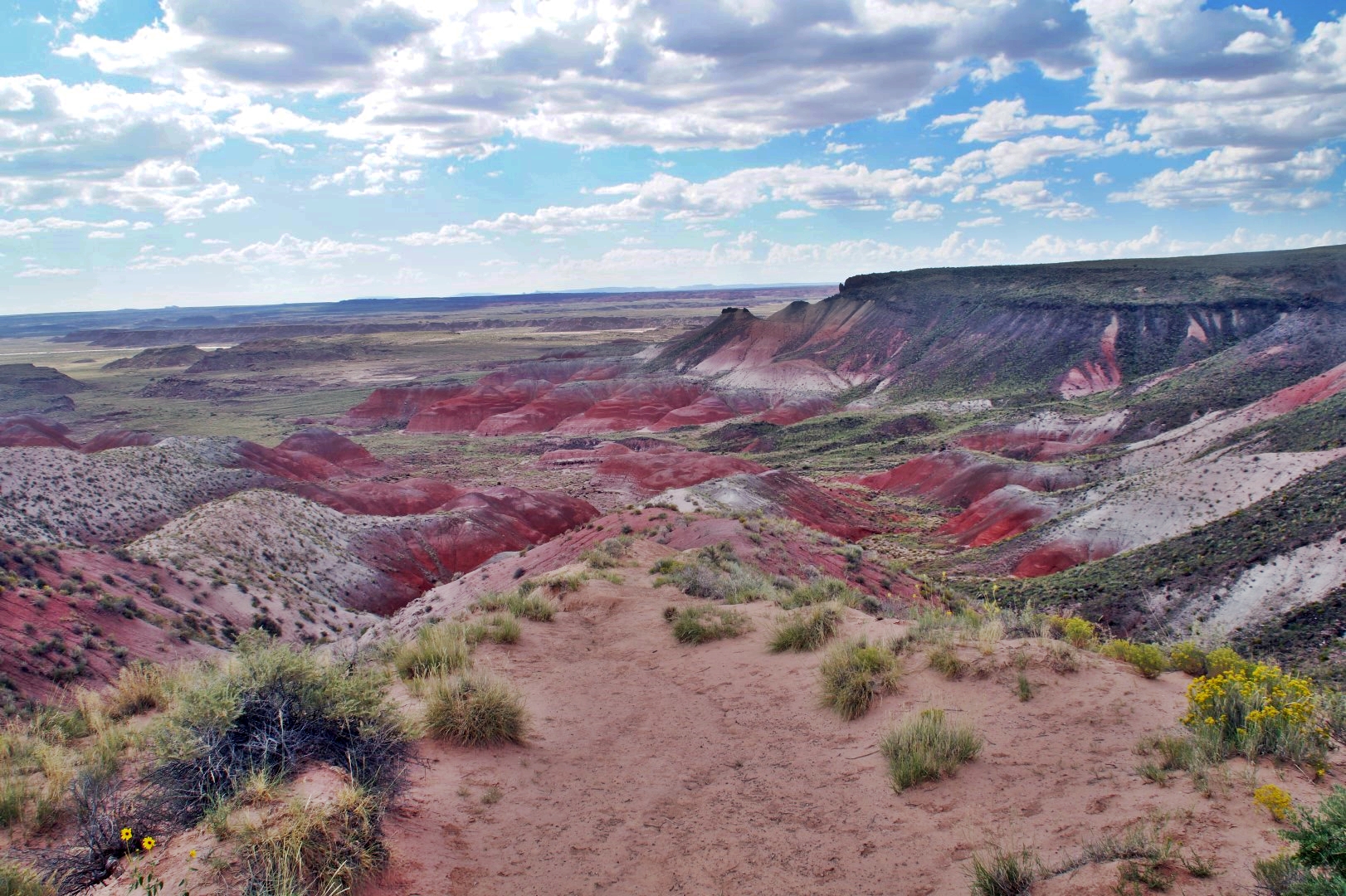
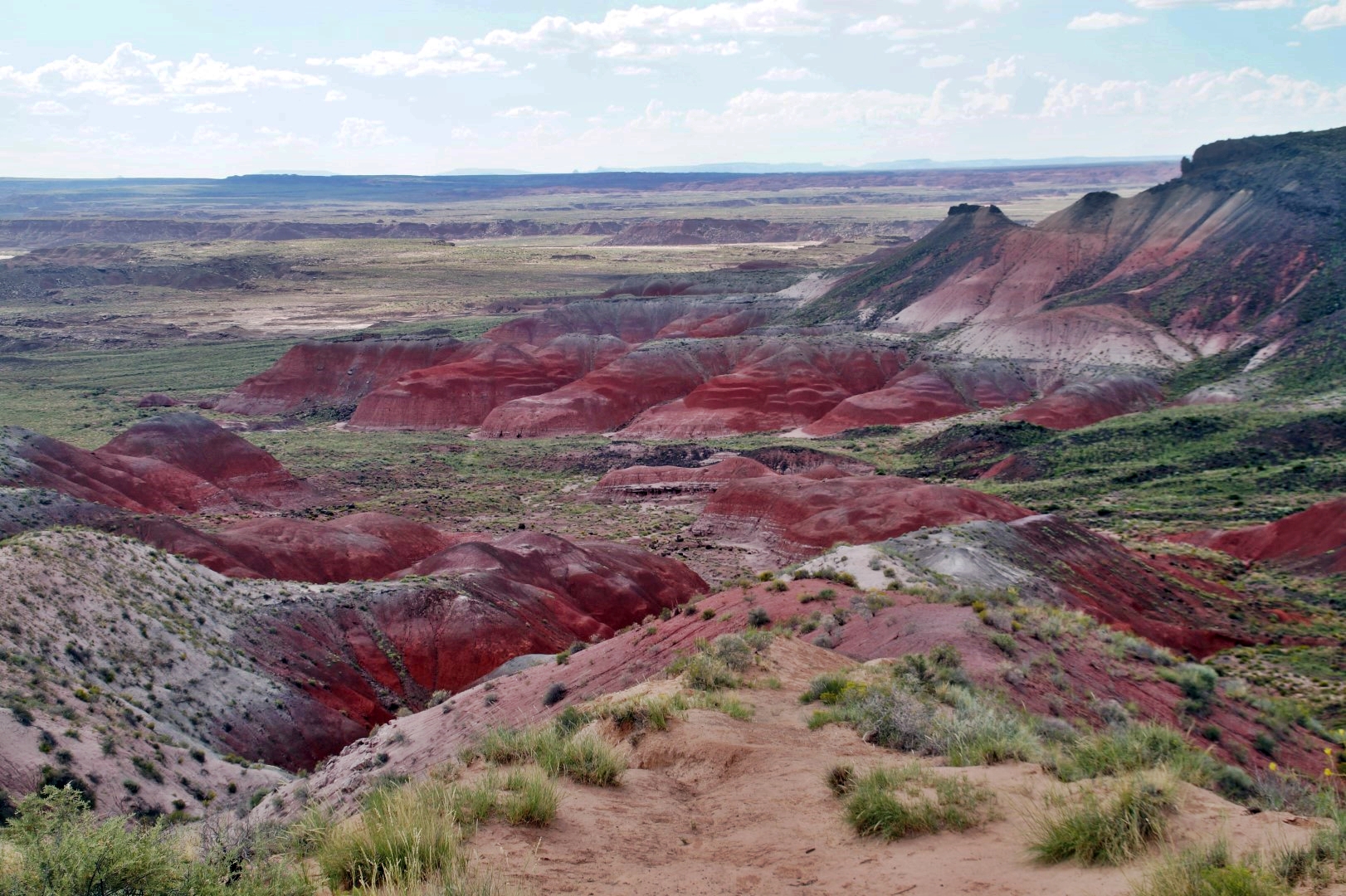
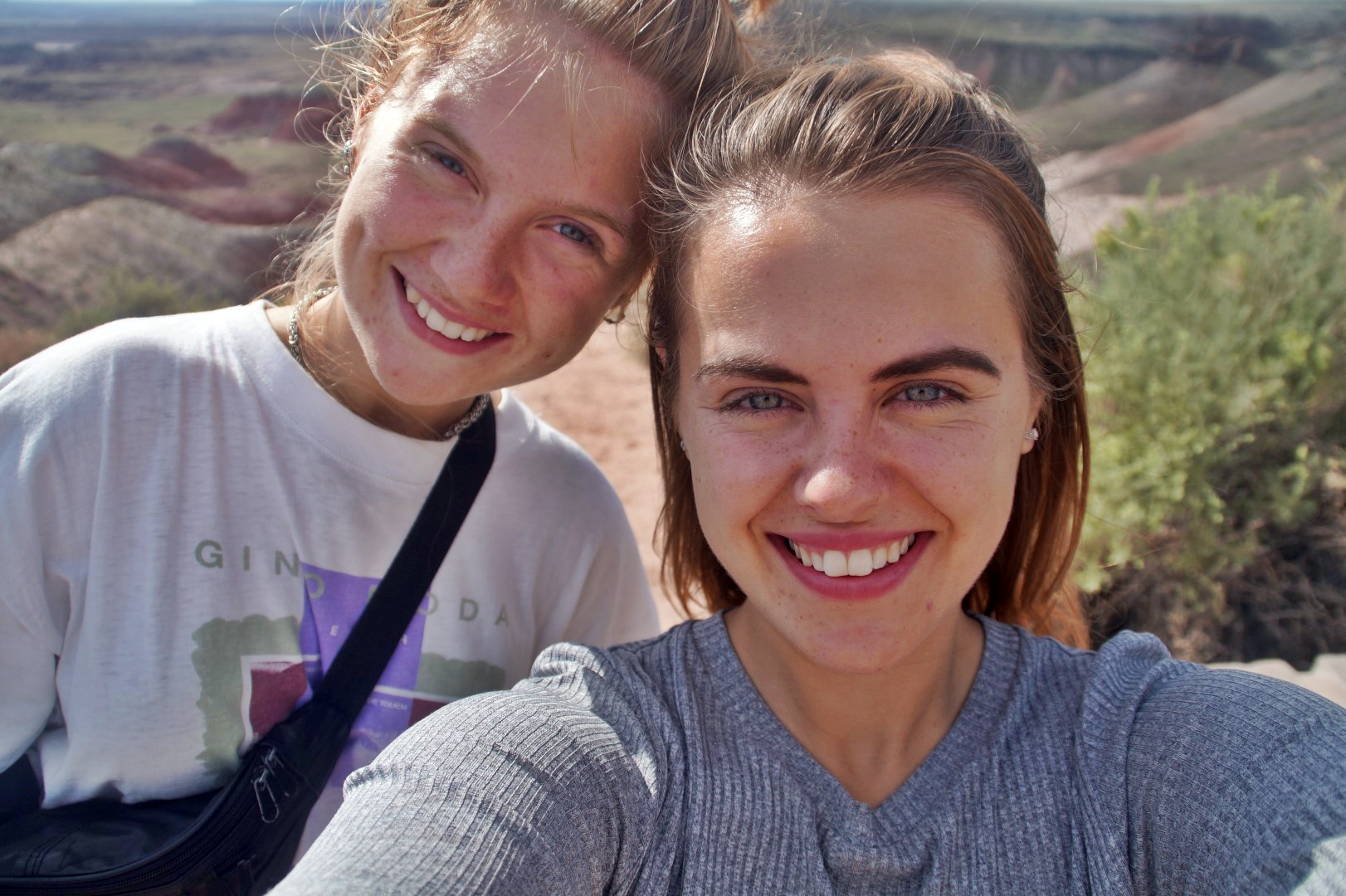
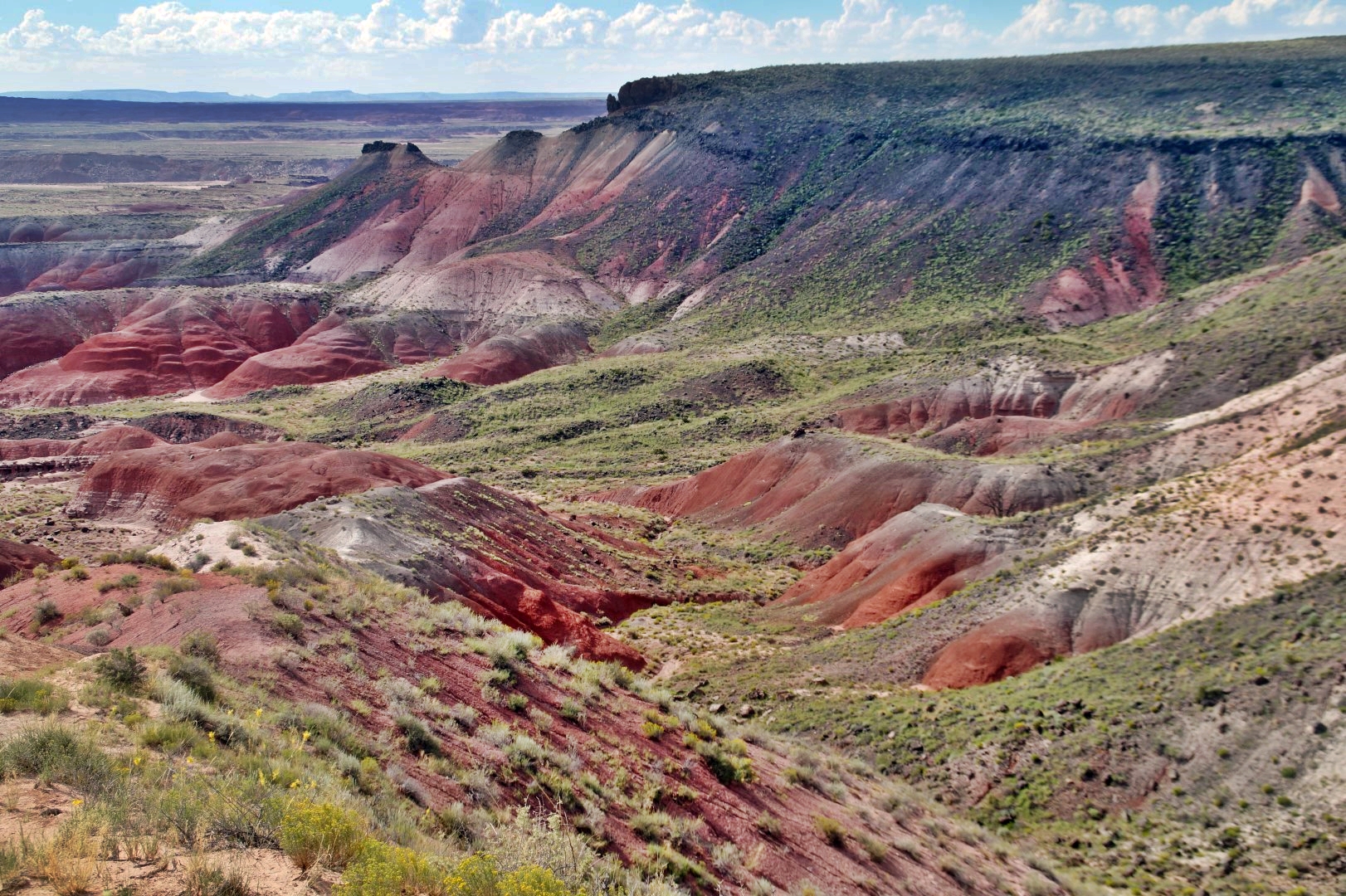
After driving through the amazing national park, we were off to New Mexico and Albuquerque, where we would spend the night, this time at a motel. We were both very tired after two semi-bad nights in the car, so we felt like we needed a proper night’s sleep – and a shower!! The motel room had a bible, which is very typical American!
It was a long drive to Albuquerque from the national park, a few hundred miles, and we made some stops along the way for food and petrol. Eventually, at about 9.30 PM, we were in the city of Albuquerque, where the heavens opened and spit out heavy rain, thunder and lightning! We still had 25 miles to go through the city before getting to the Motel 6, and it was dark and awful weather. It wasn’t the most fun driving experience, but we made it in the end and were happy to finally lay in a bed again!
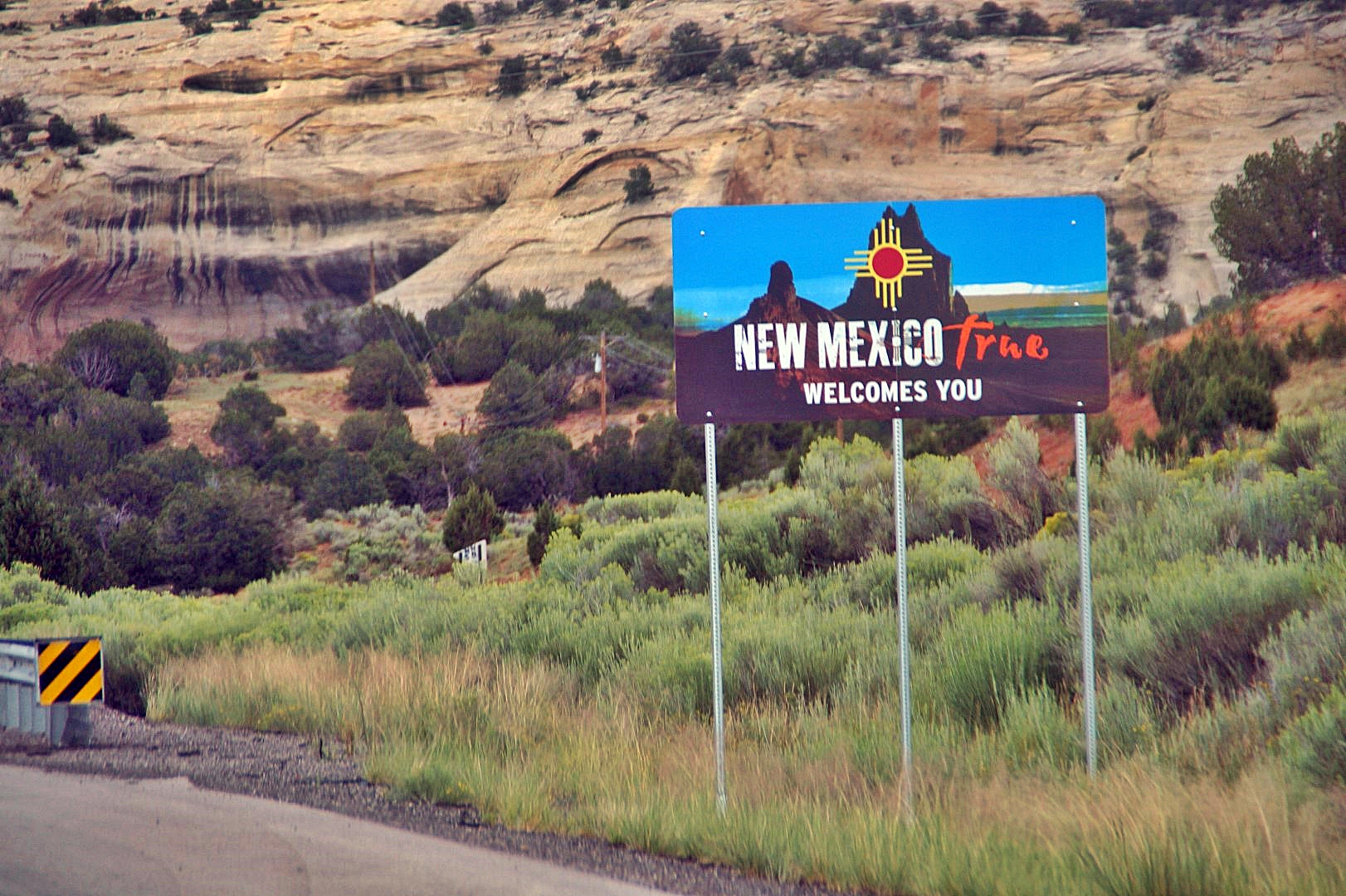


This shop buys guns
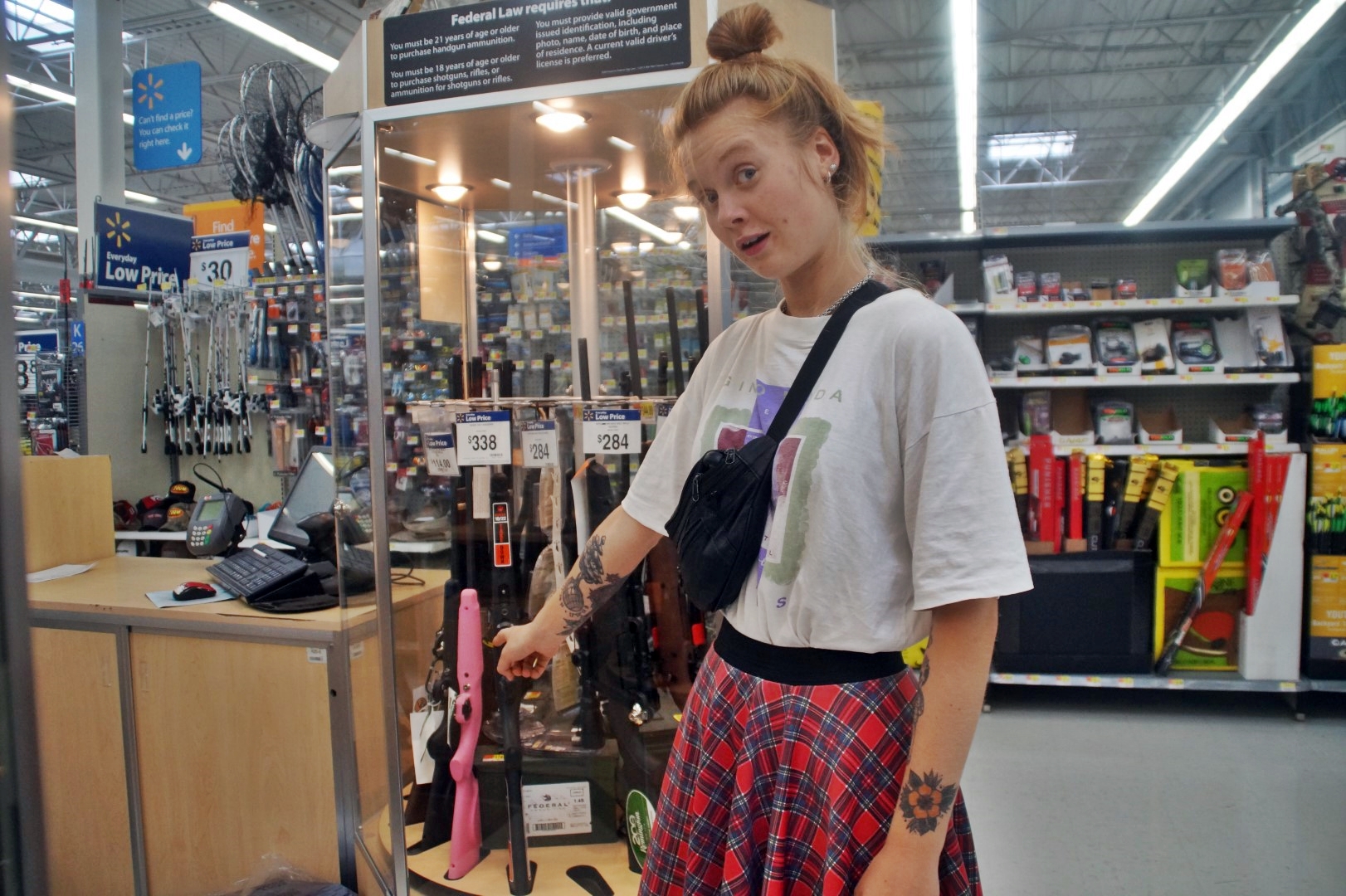
But we do not.
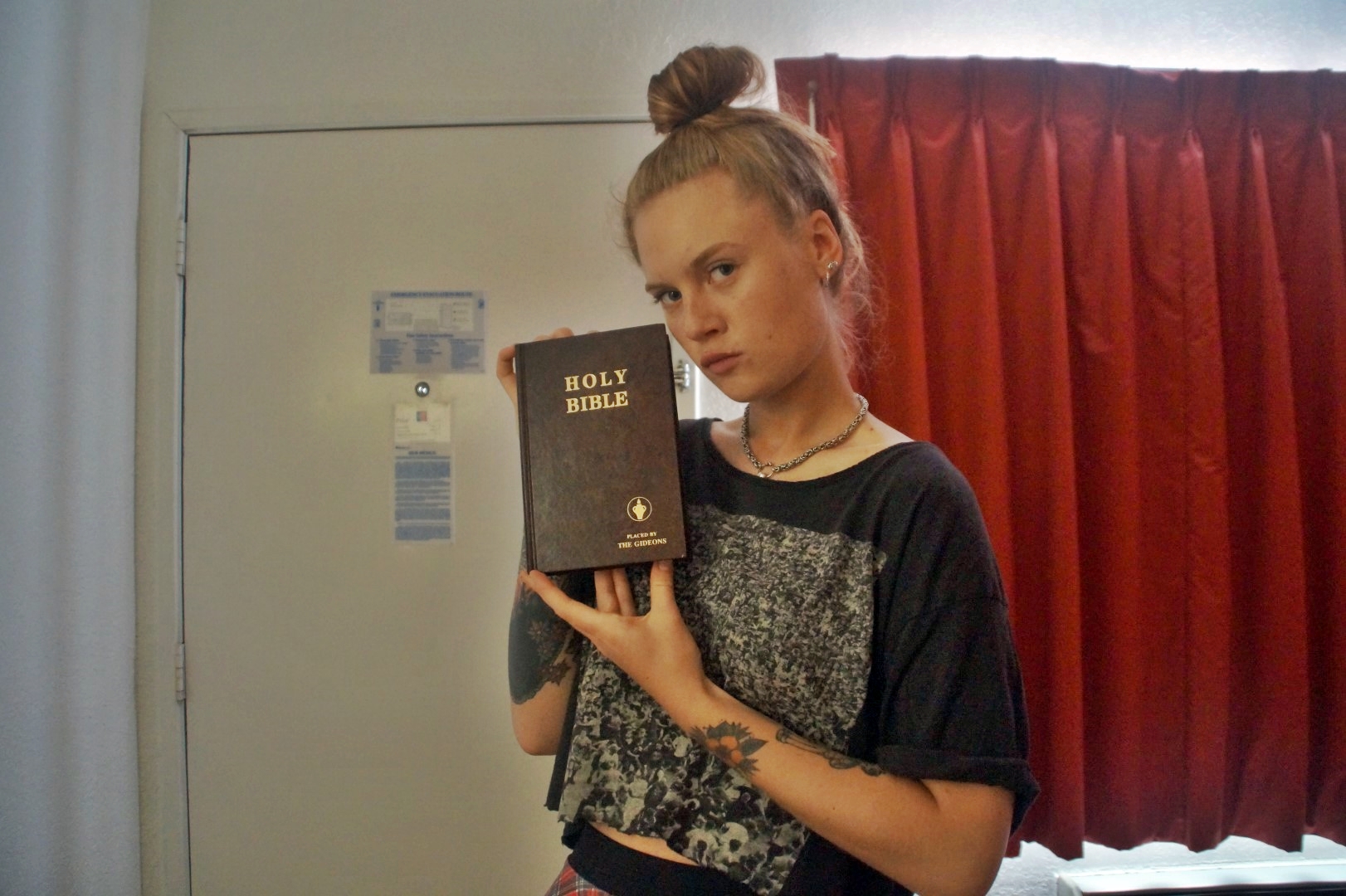
Perfect good night reading!
The next day, we got up at 10 AM, ready to start the next leg of our journey on Route 66. Before driving off to Texas, we drove around Albuquerque for a bit, in search for classic Route 66 sights. Unfortunately, most of the city was under reconstruction, so we couldn’t possibly park anywhere, so we just opted for window photos of two classic sights.
The first was the De Anza Motor Lodge. It was built in 1939 on Central Avenue, the main street of Route 66 in Albuquerque, in order to take advantage of the traffic along the historic route. It served as a gathering place for traders and craftsmen of the Zuni Indians, and for travellers who stopped by to admire and purchase the Indian crafts and jewellery.
Next was the KiMo Theatre, located a few miles further along Central Avenue. This famous landmark was built in 1927 in Art Deco-Pueblo Revival Style architecture with rounded corners and edges and decorative motifs from Indian cultures. It was built as a cinema and theatre and offers a mixed variety of entertainment, but unfortunately, we couldn’t possibly stop to have a look in.
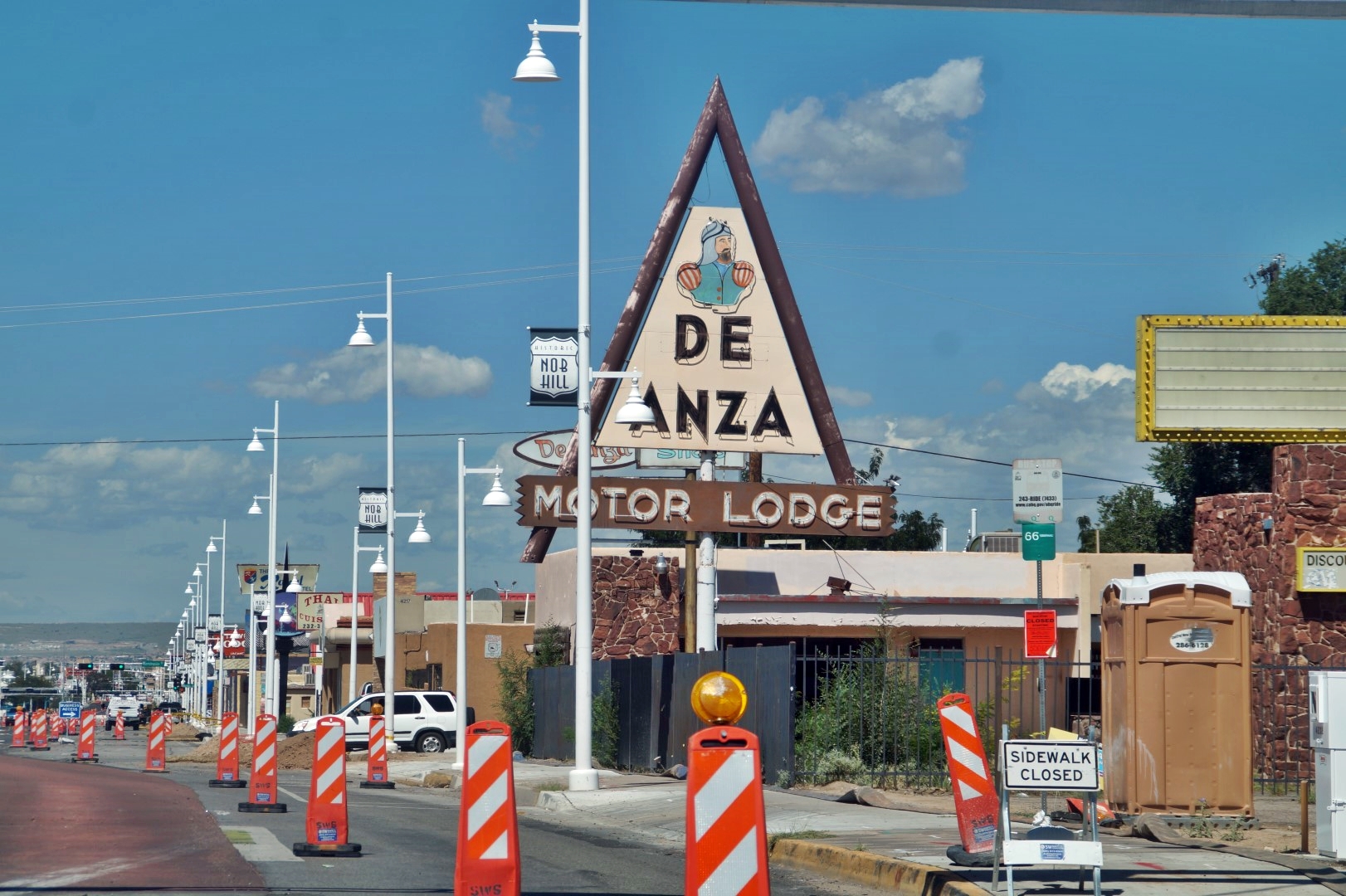
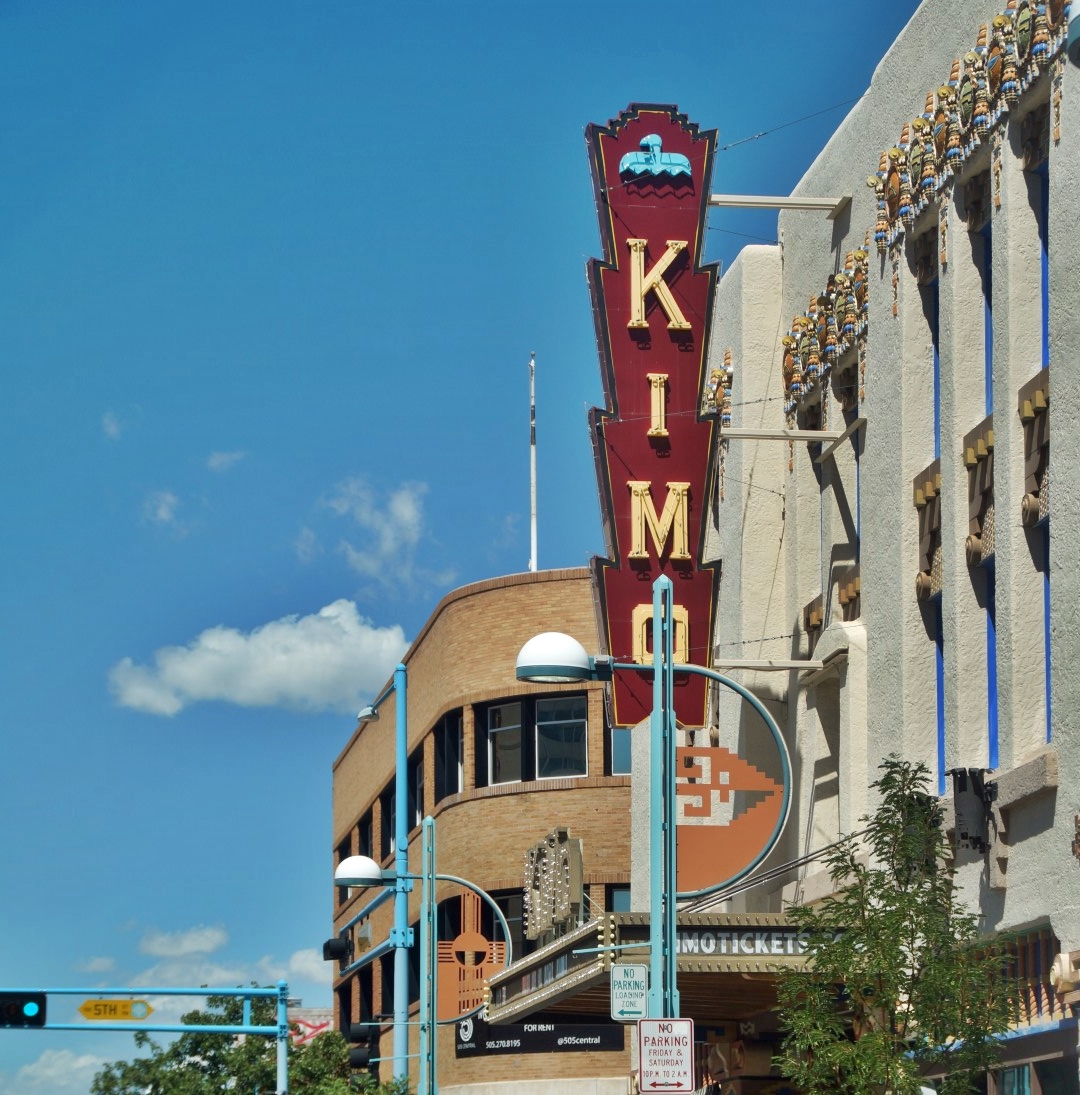
We continued along Central Avenue, out of Albuquerque to the beautiful artsy city of Santa Fe and then further onwards to the northernmost part of Texas, stopping at several classic Route 66 locations along the way. Read all about that in my next post!
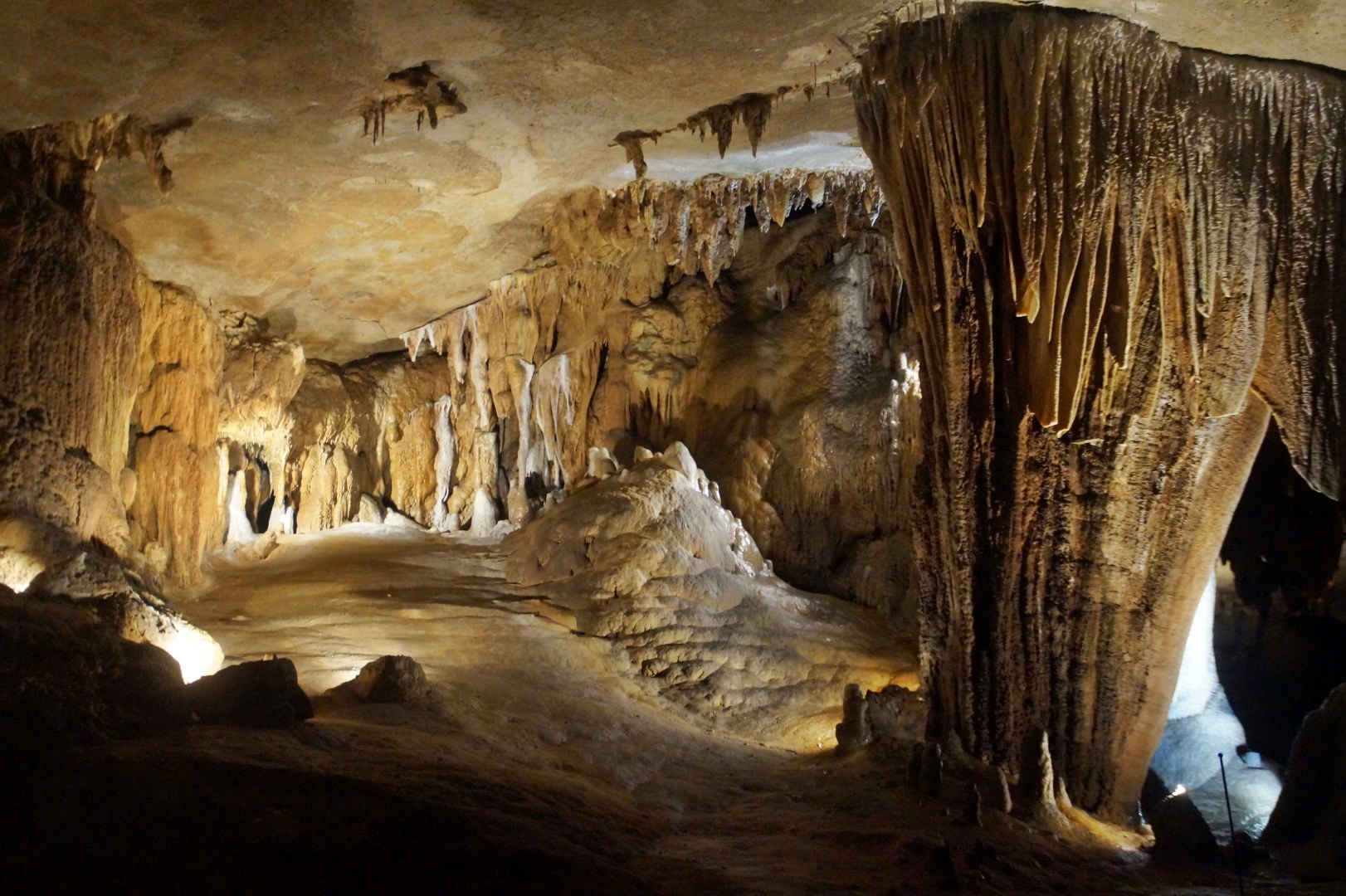

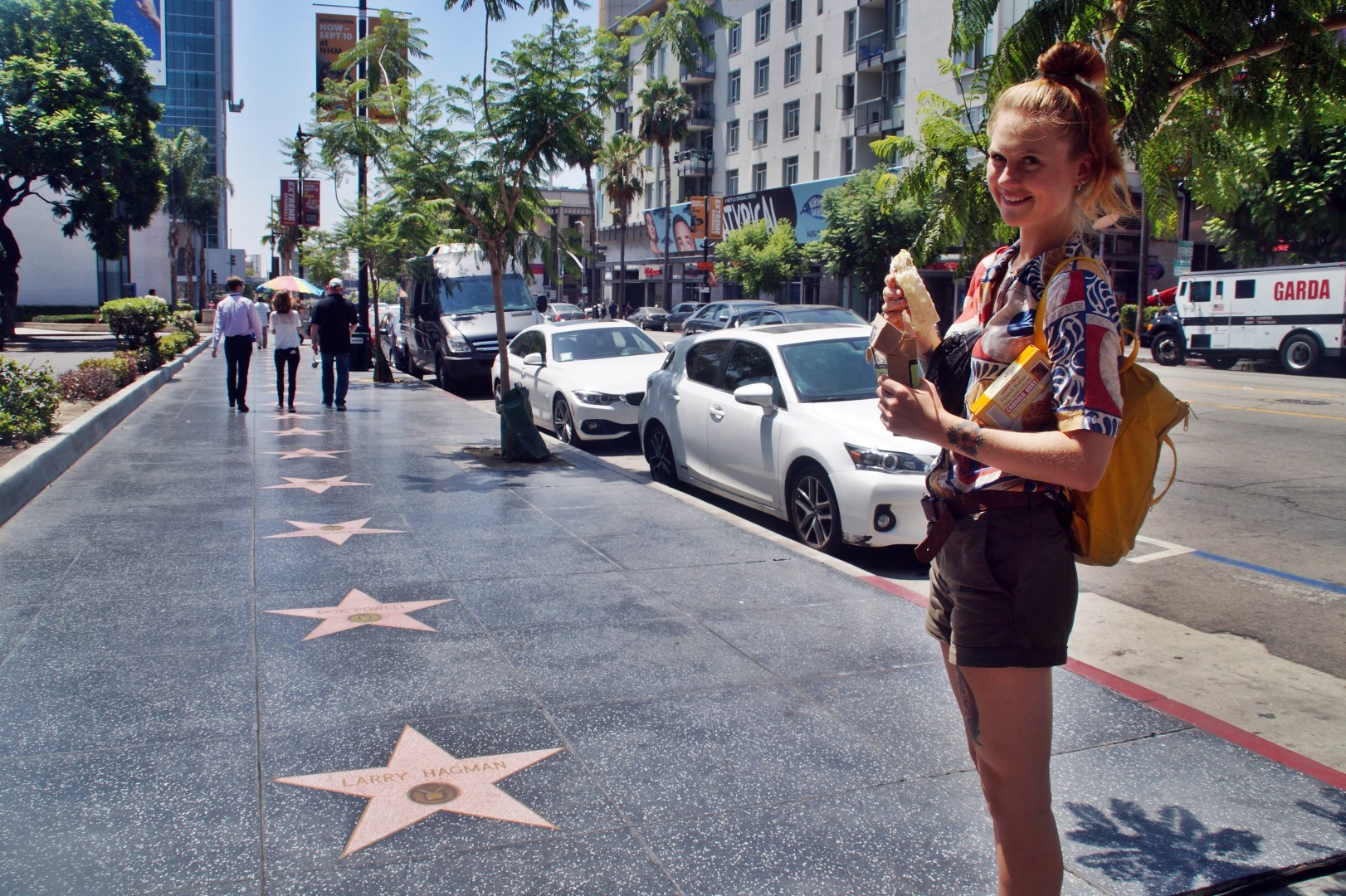

2 COMMENTS
Ann
7 years agoIt seems you spotted many historical sites and you even found poops..kidding. A great trip! Everything really looks very American as I imagined.
Melissa Cherry
7 years agoHahaha I loved the dinosaur poops, that was hilarious 😛 it was very true American indeed! 😀